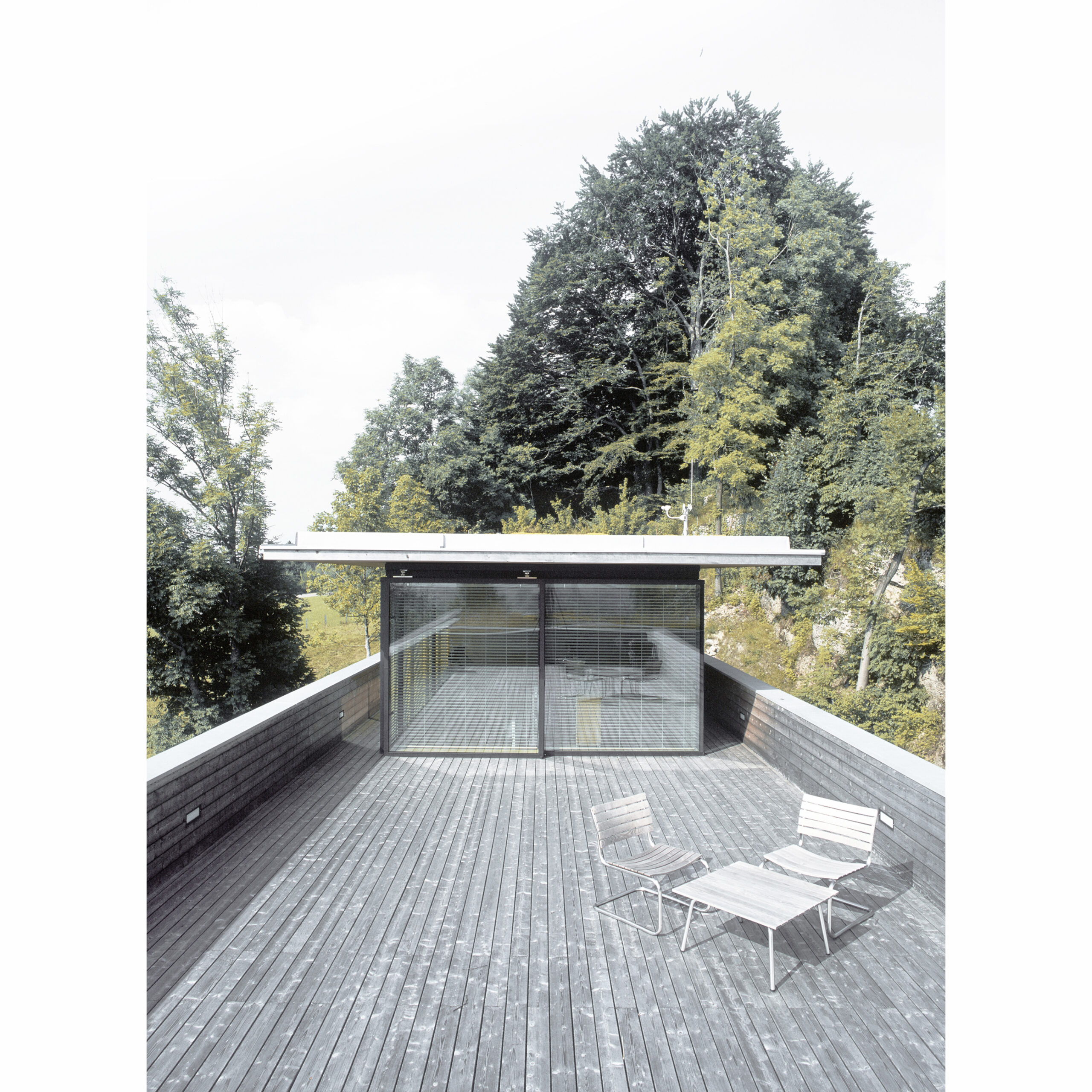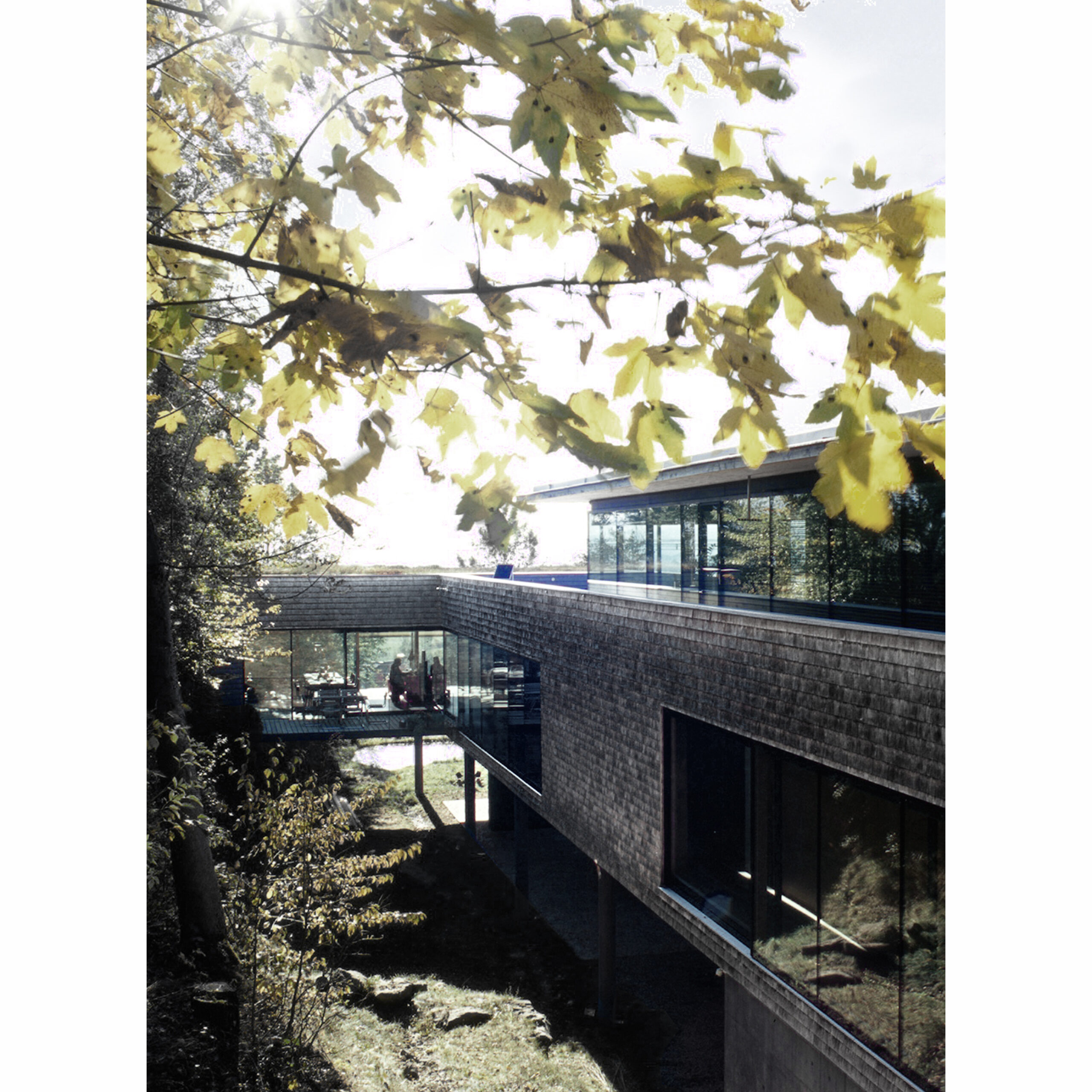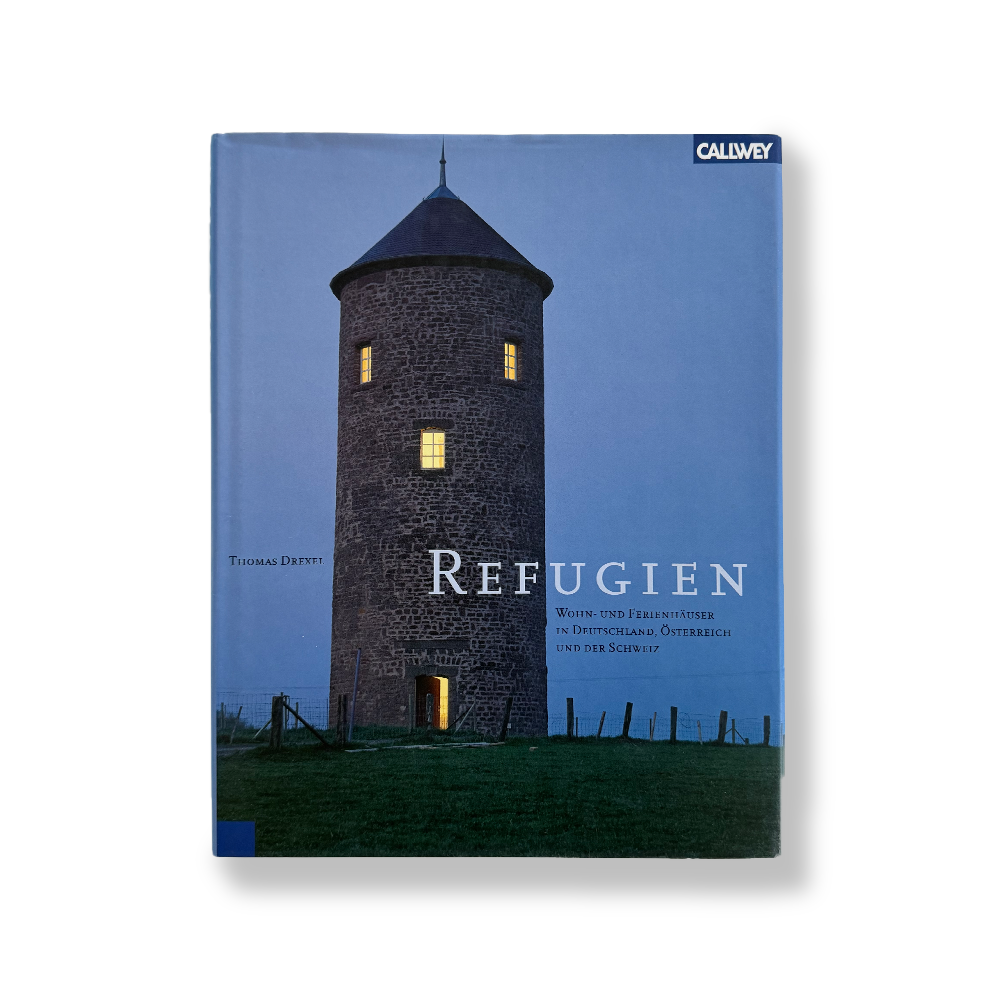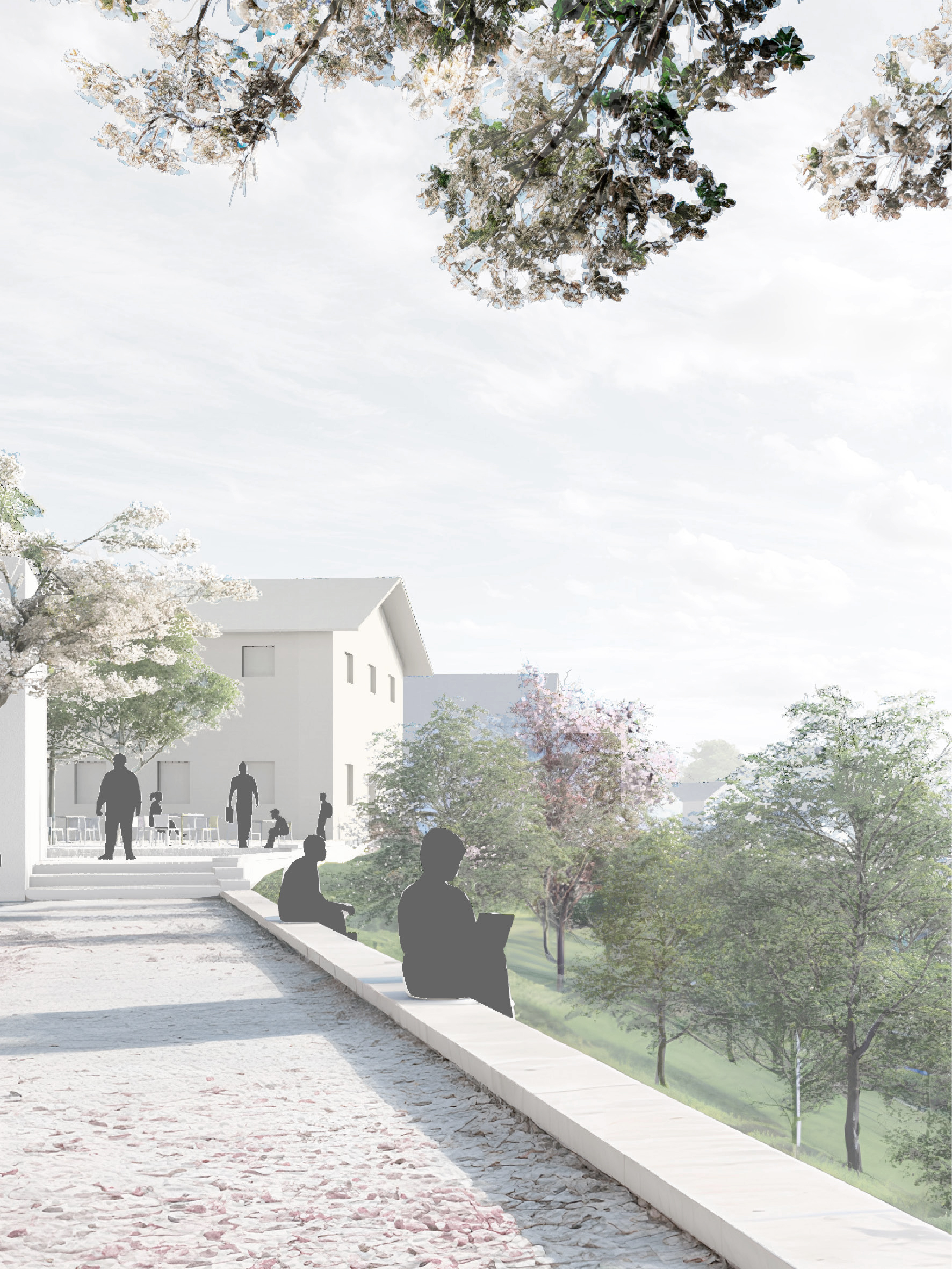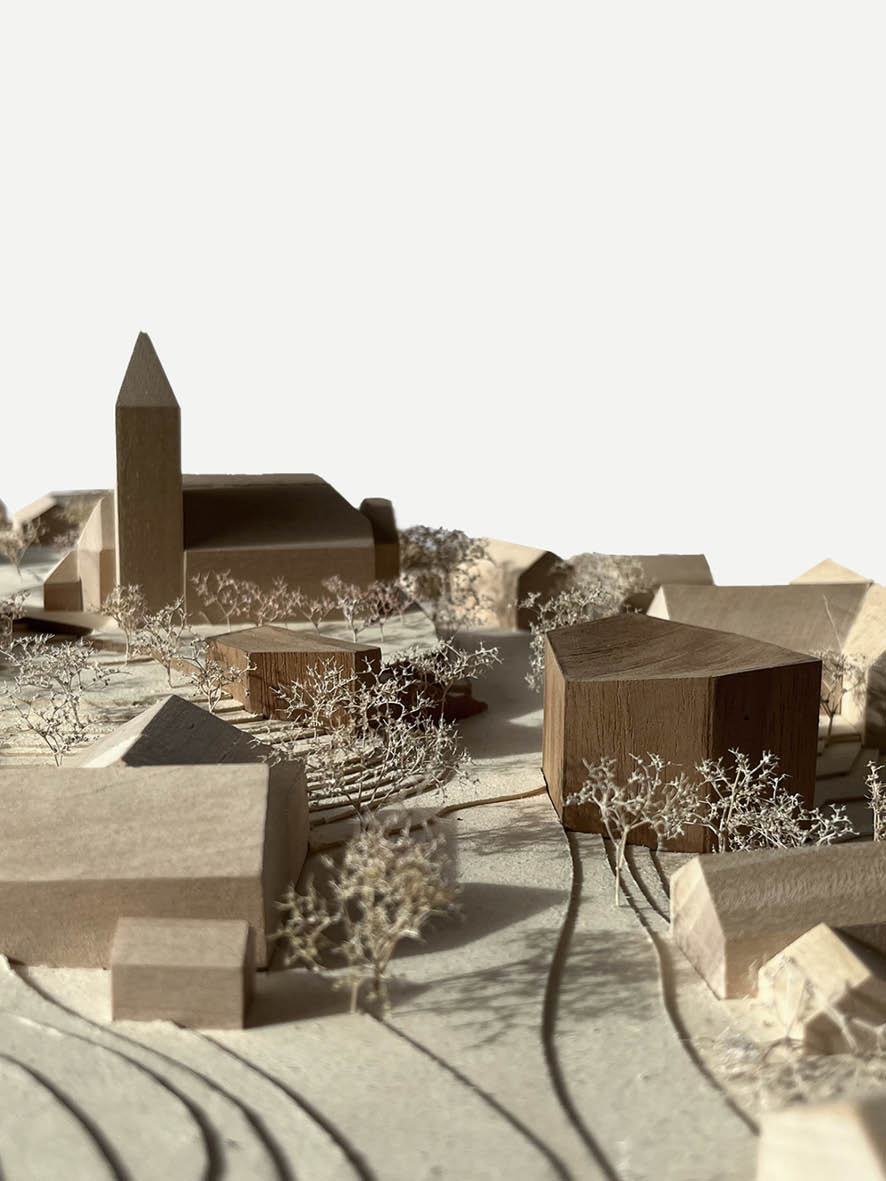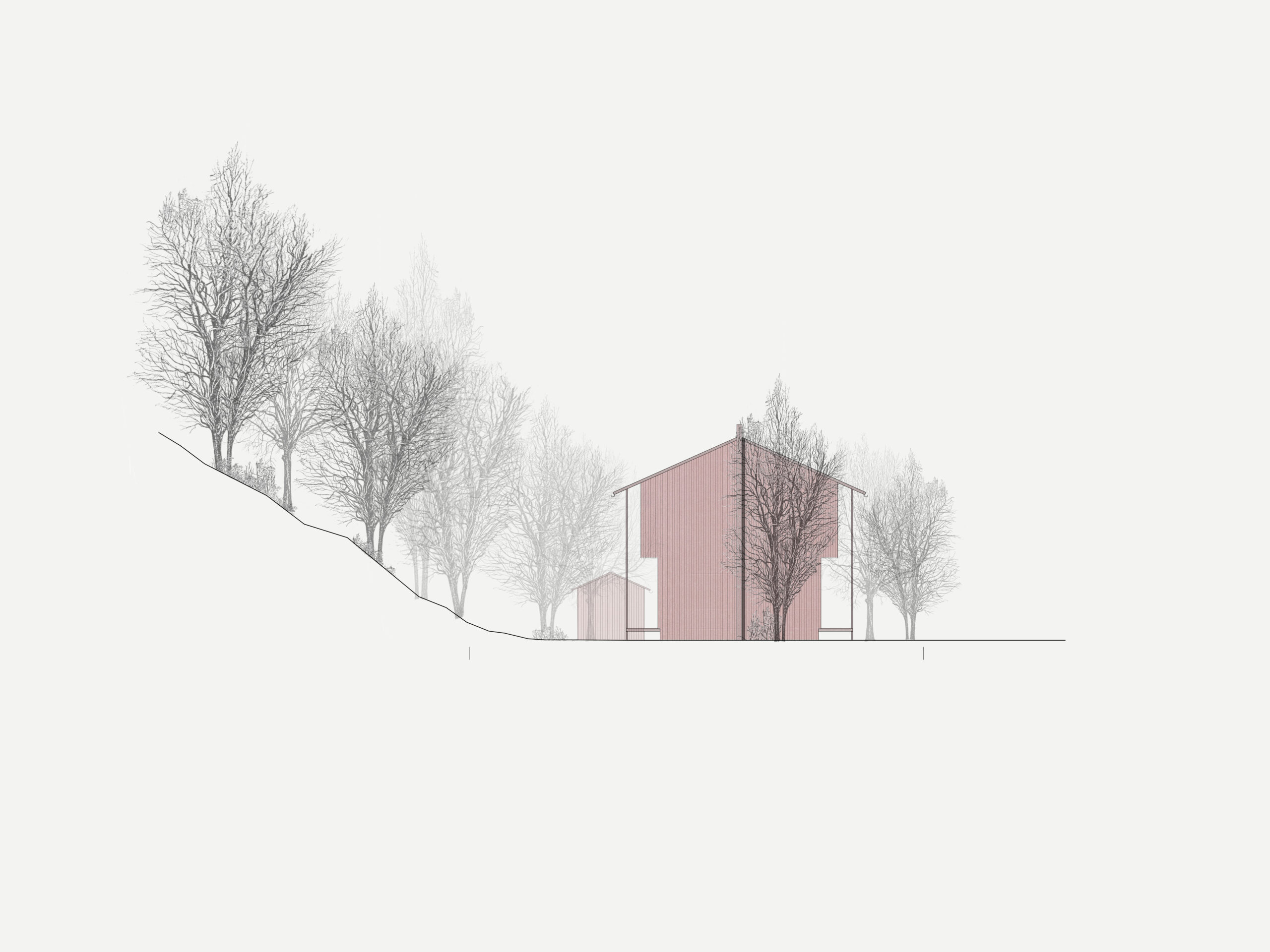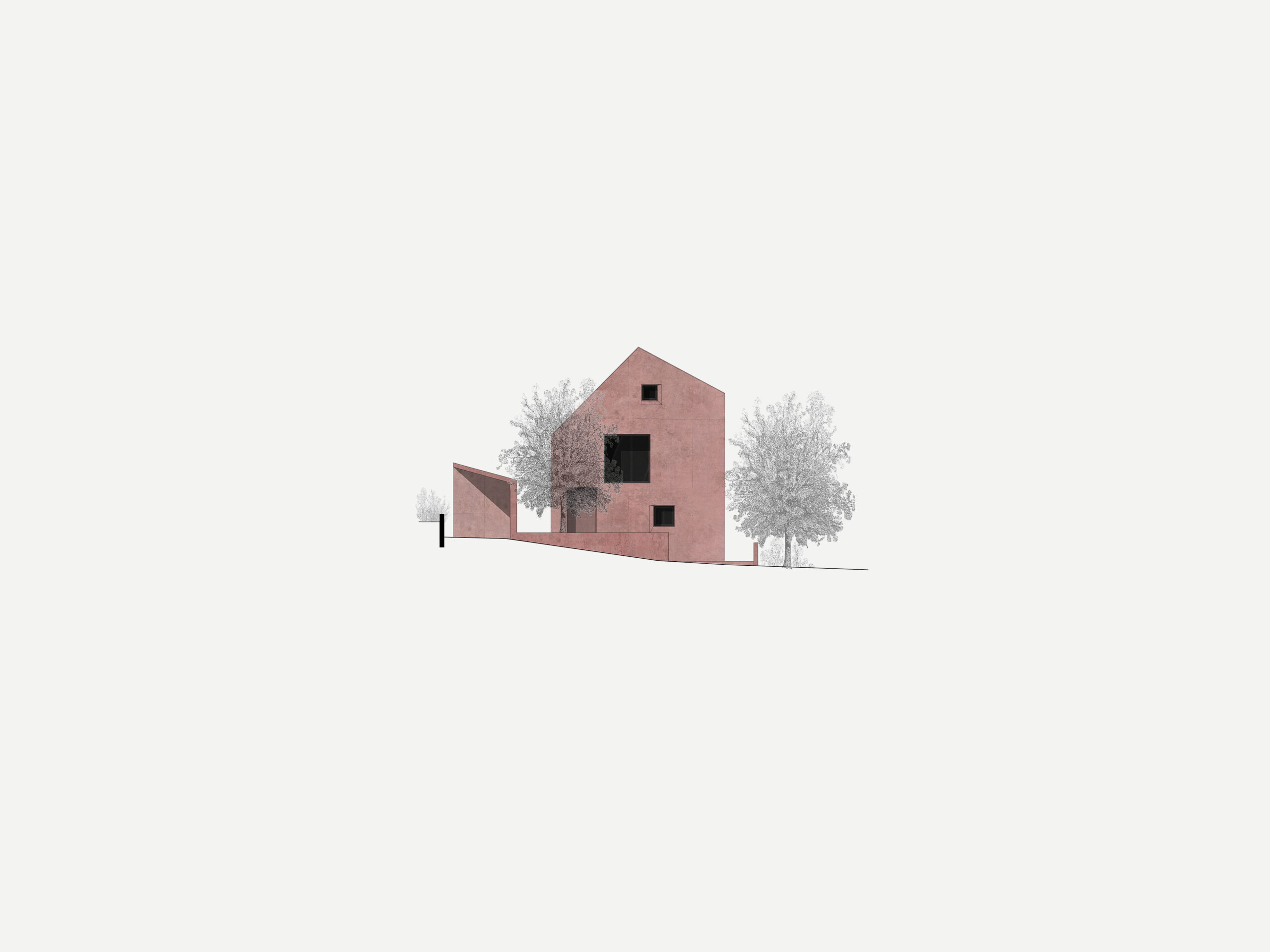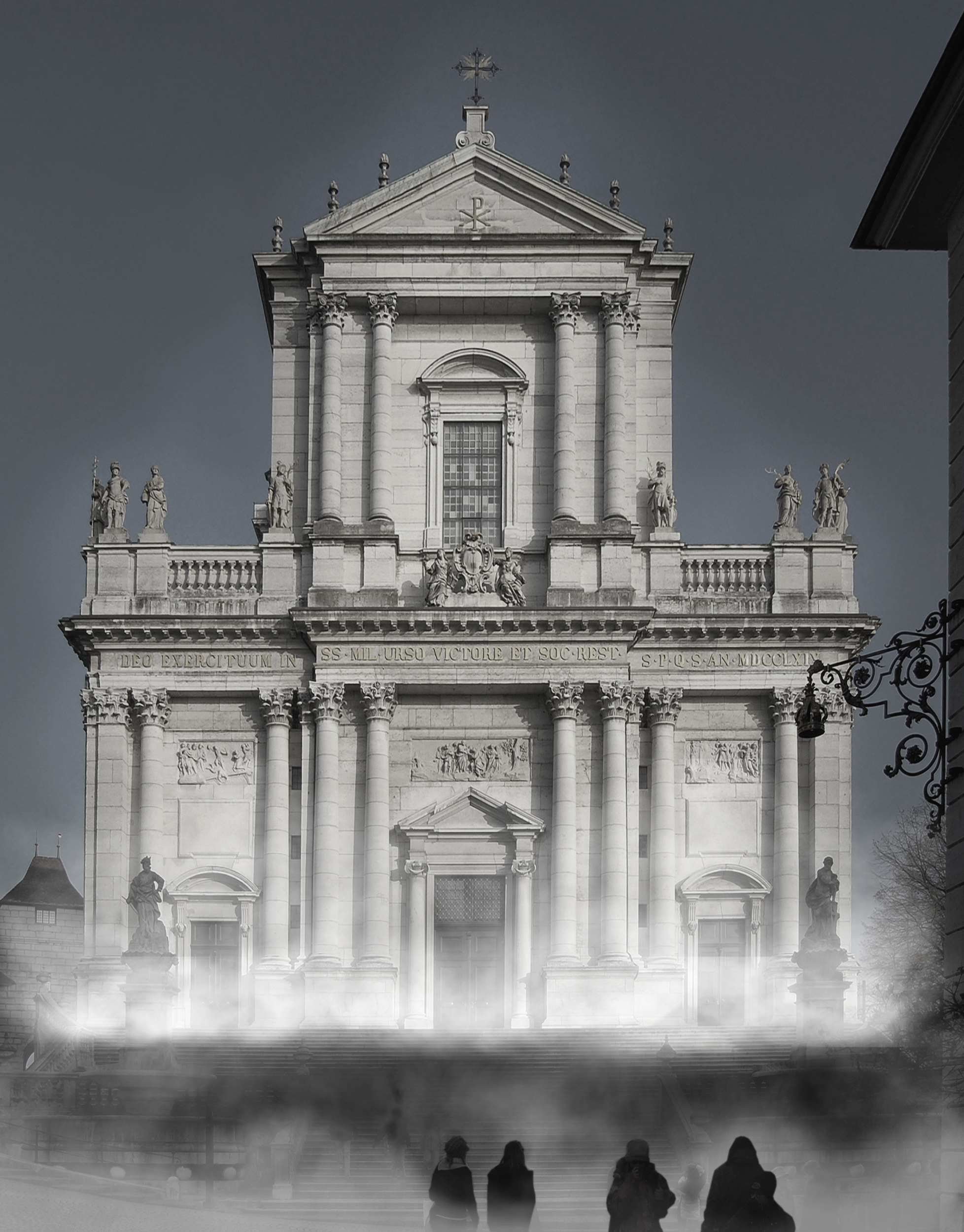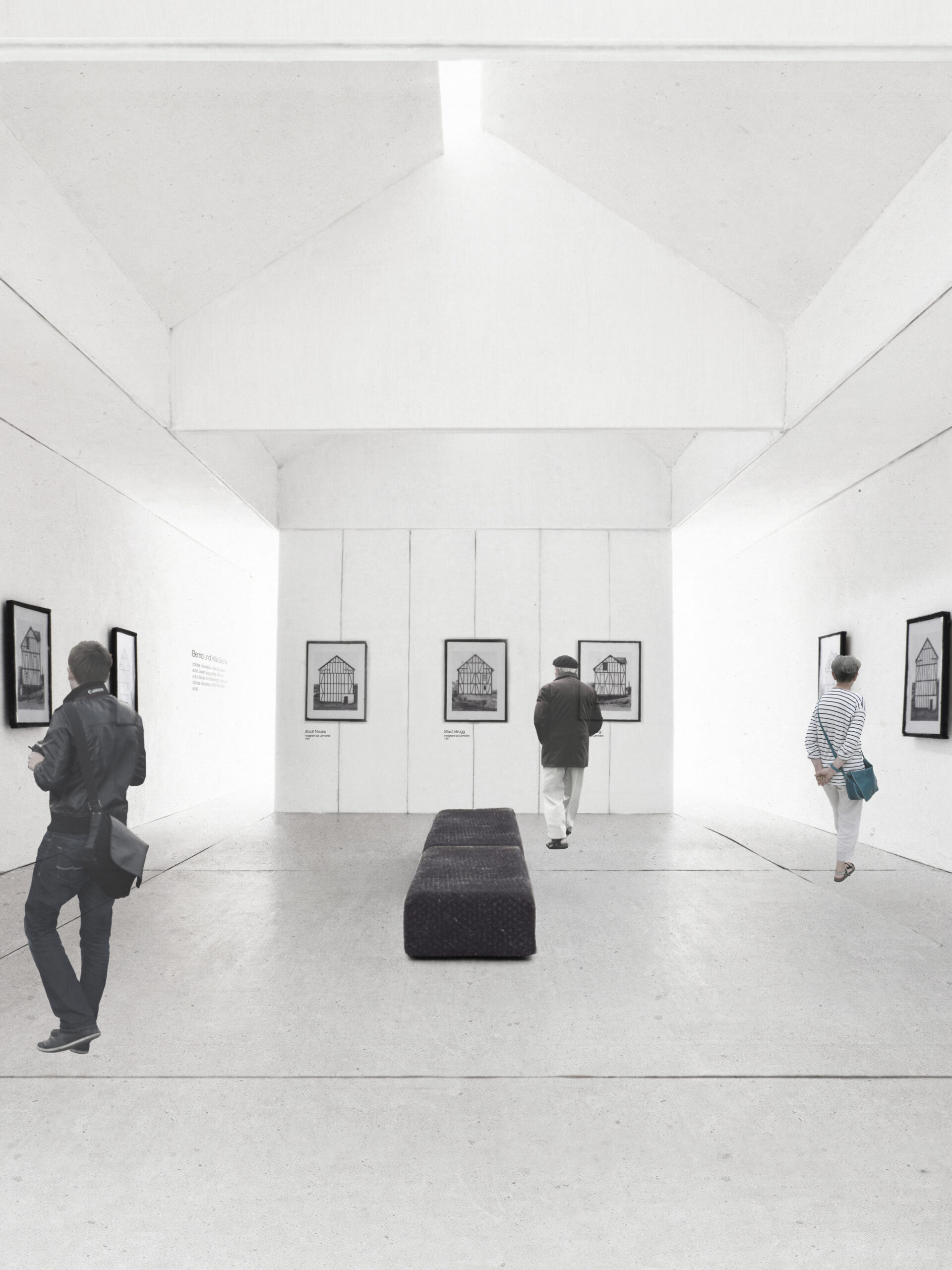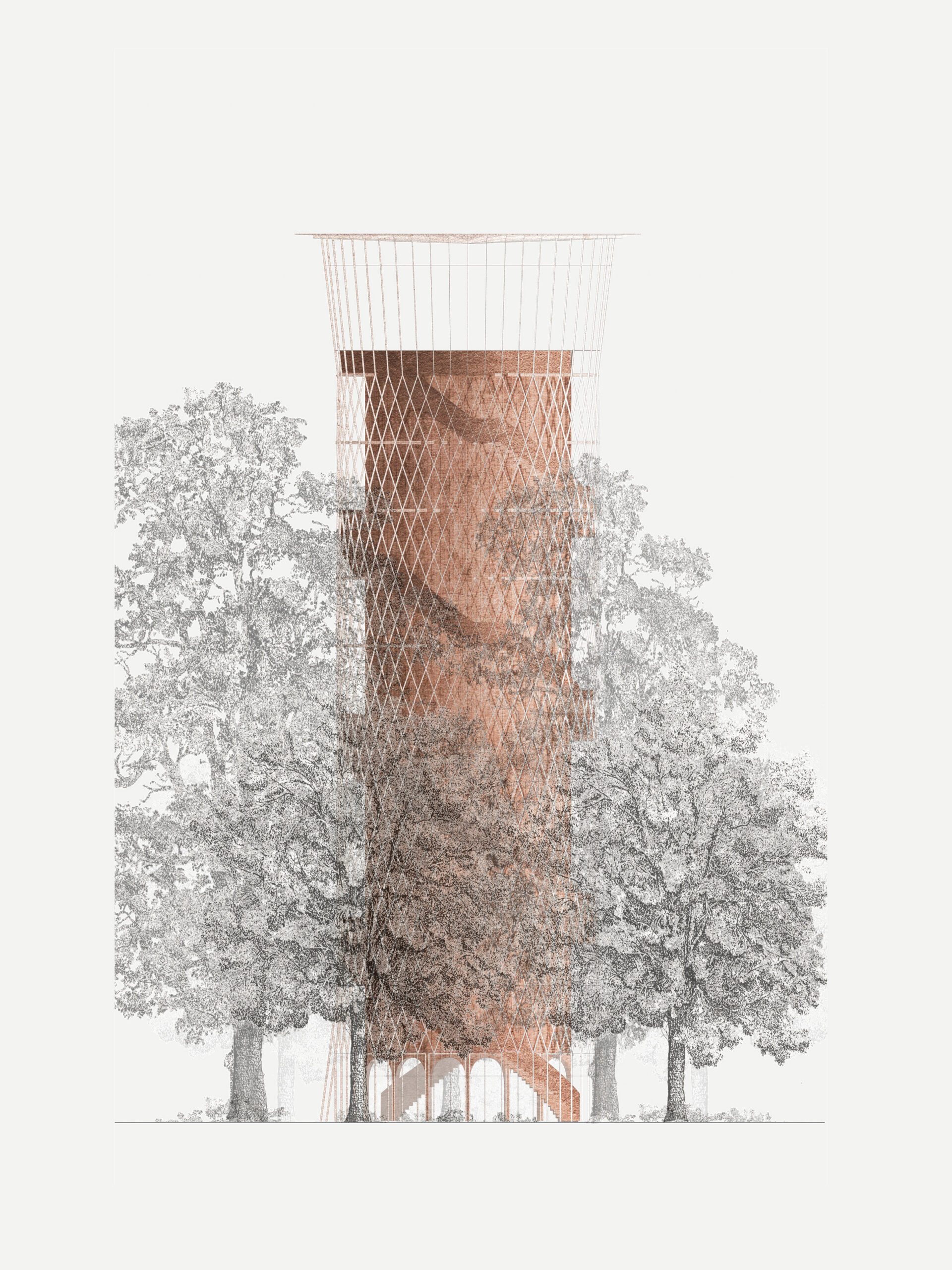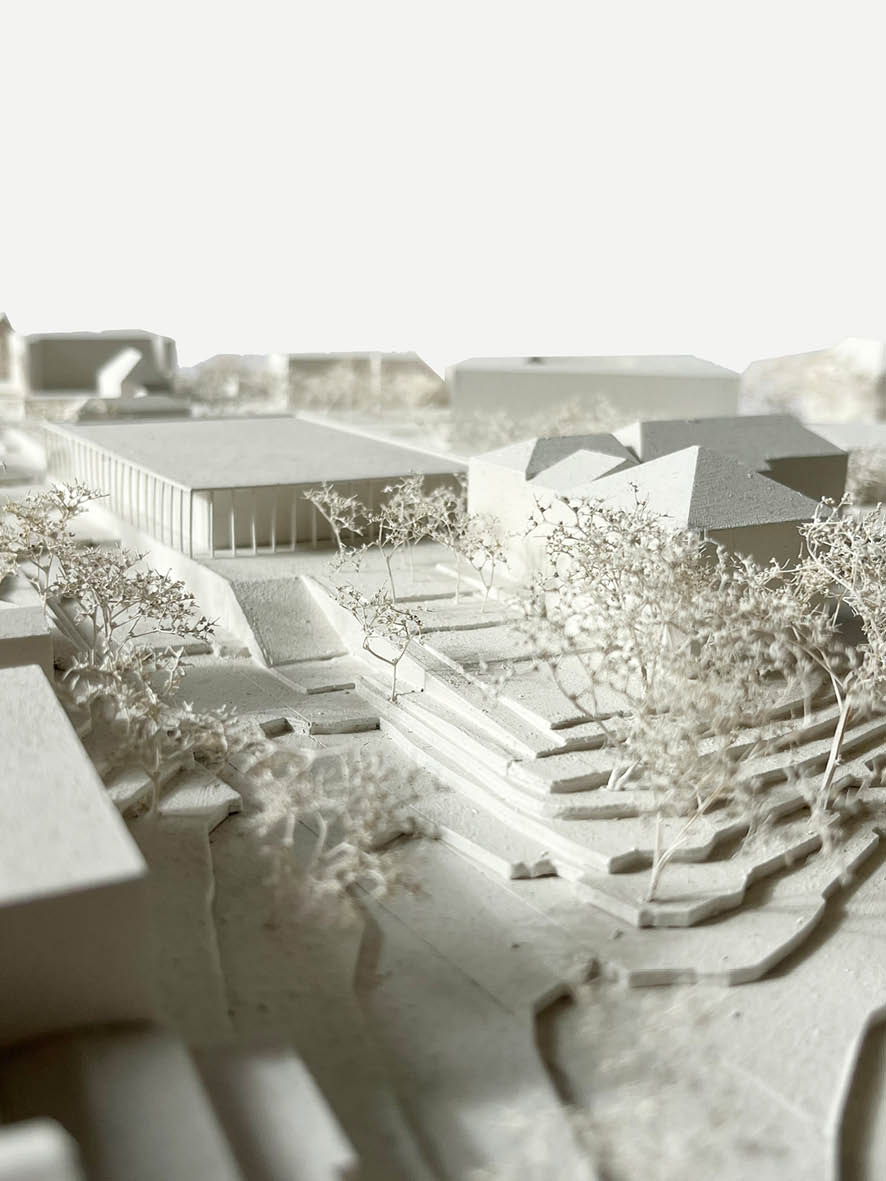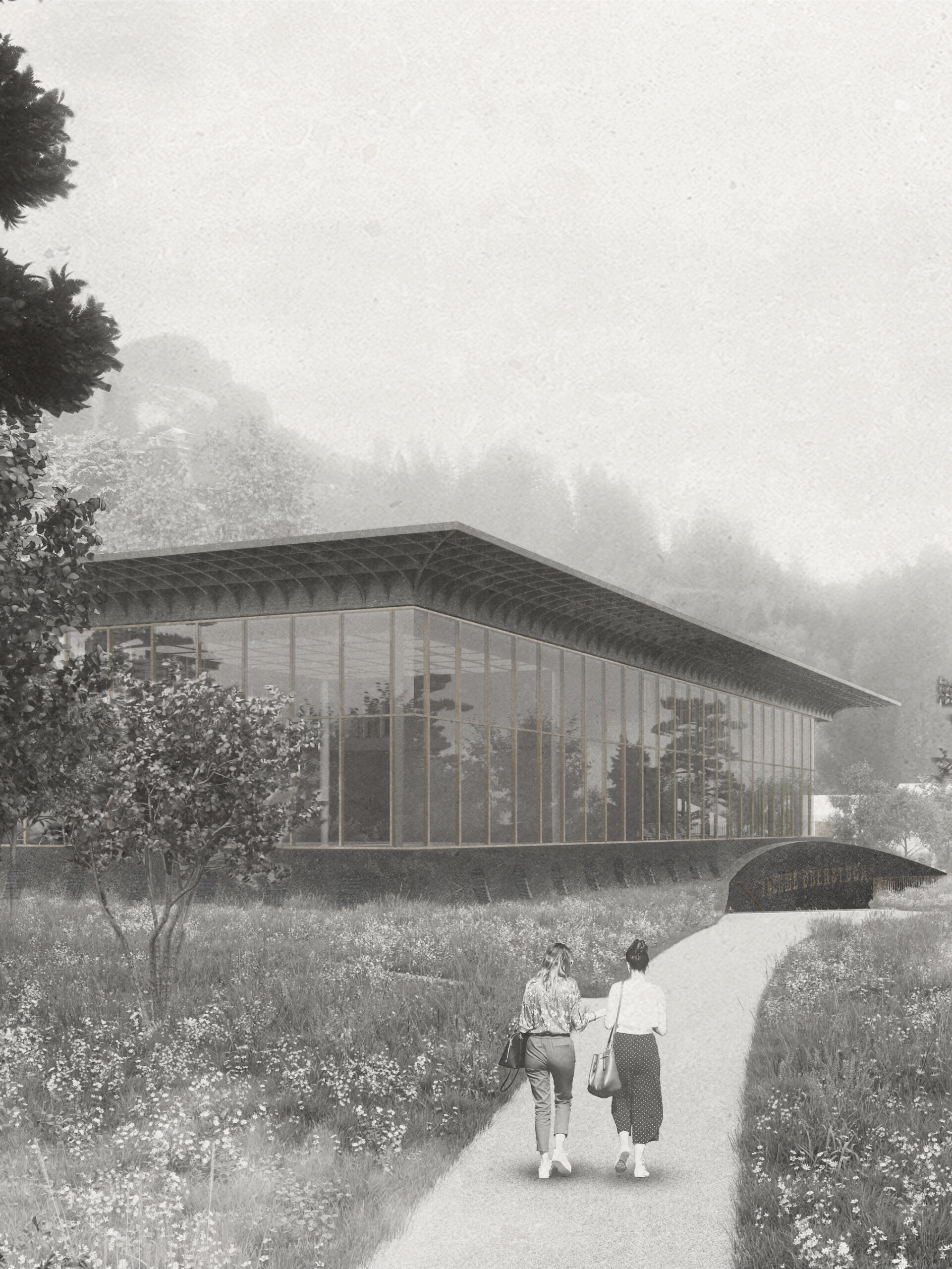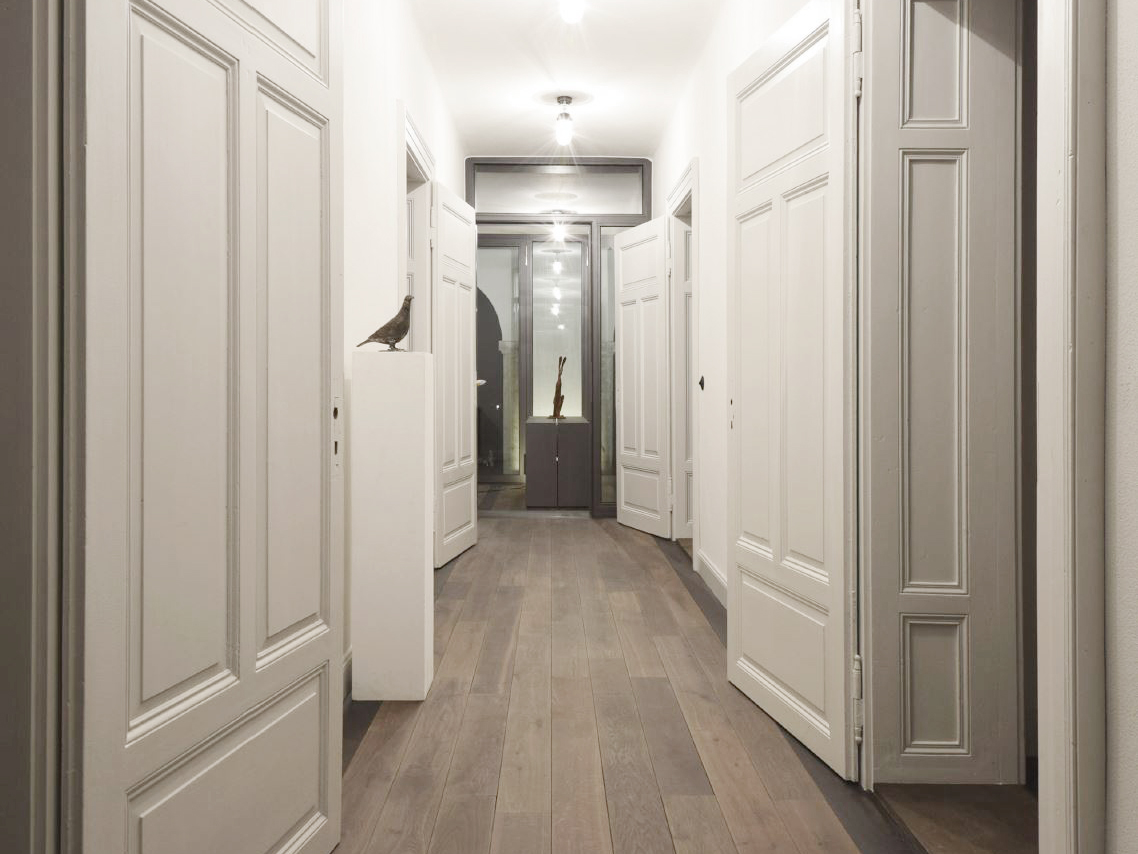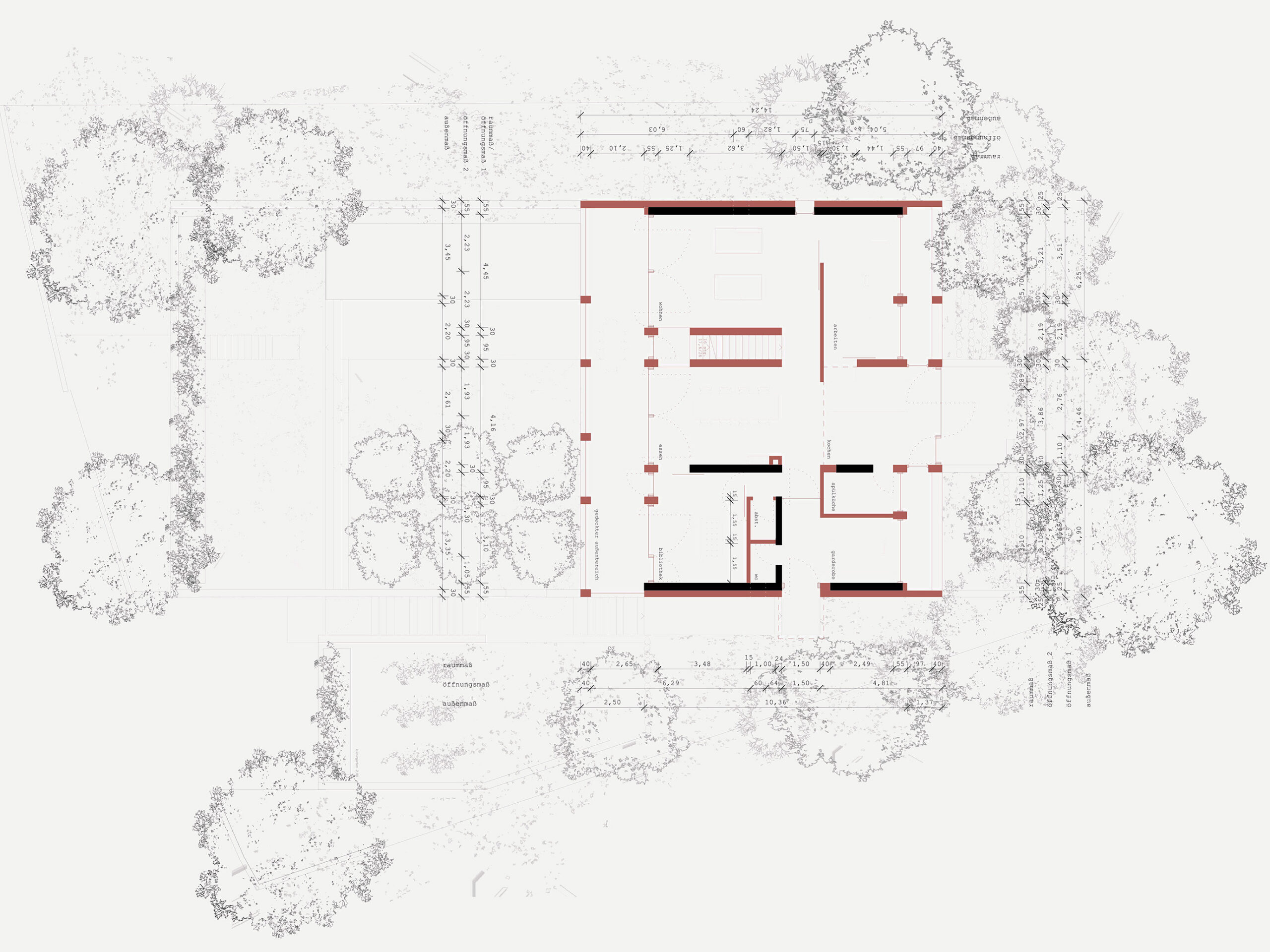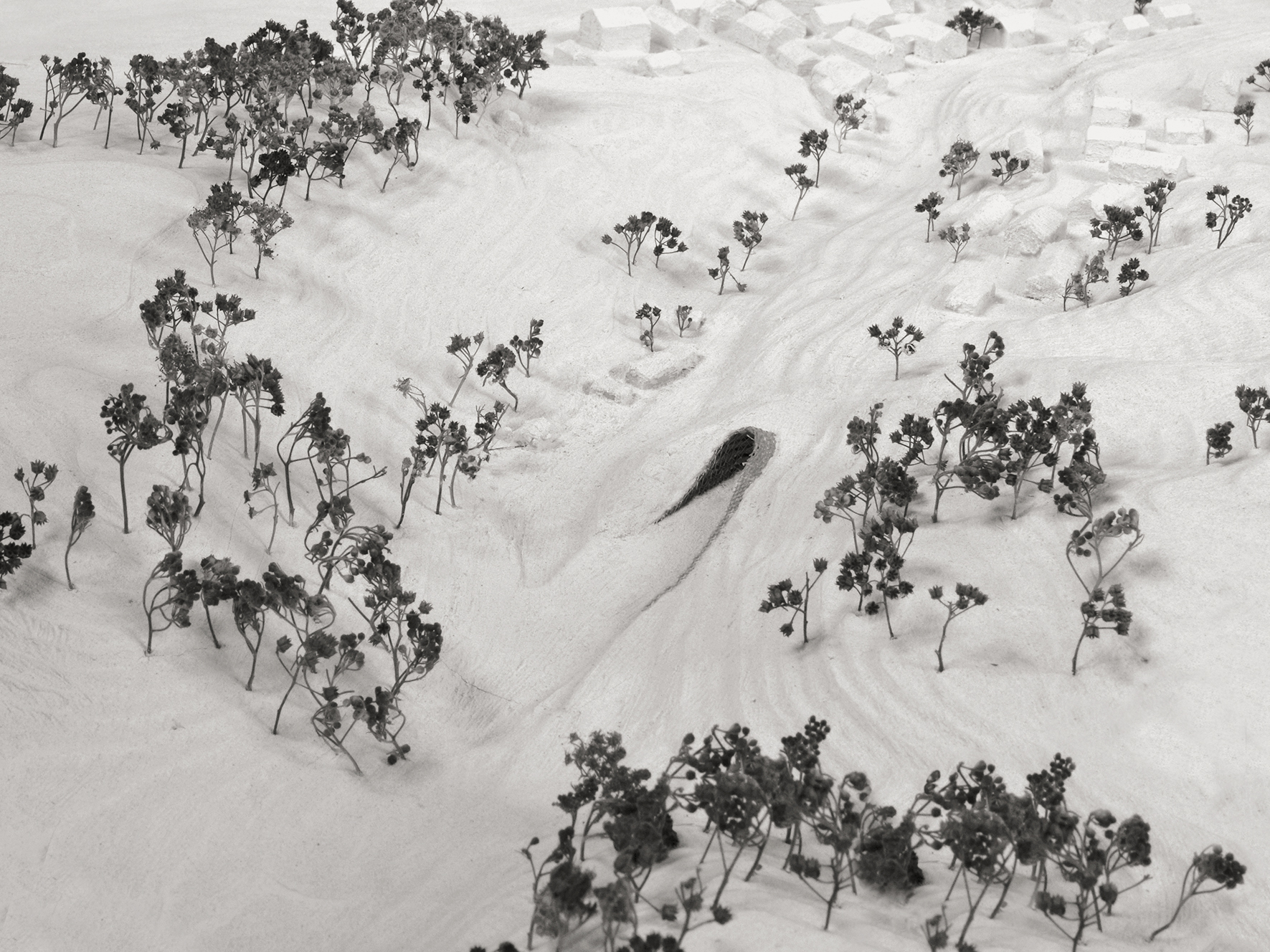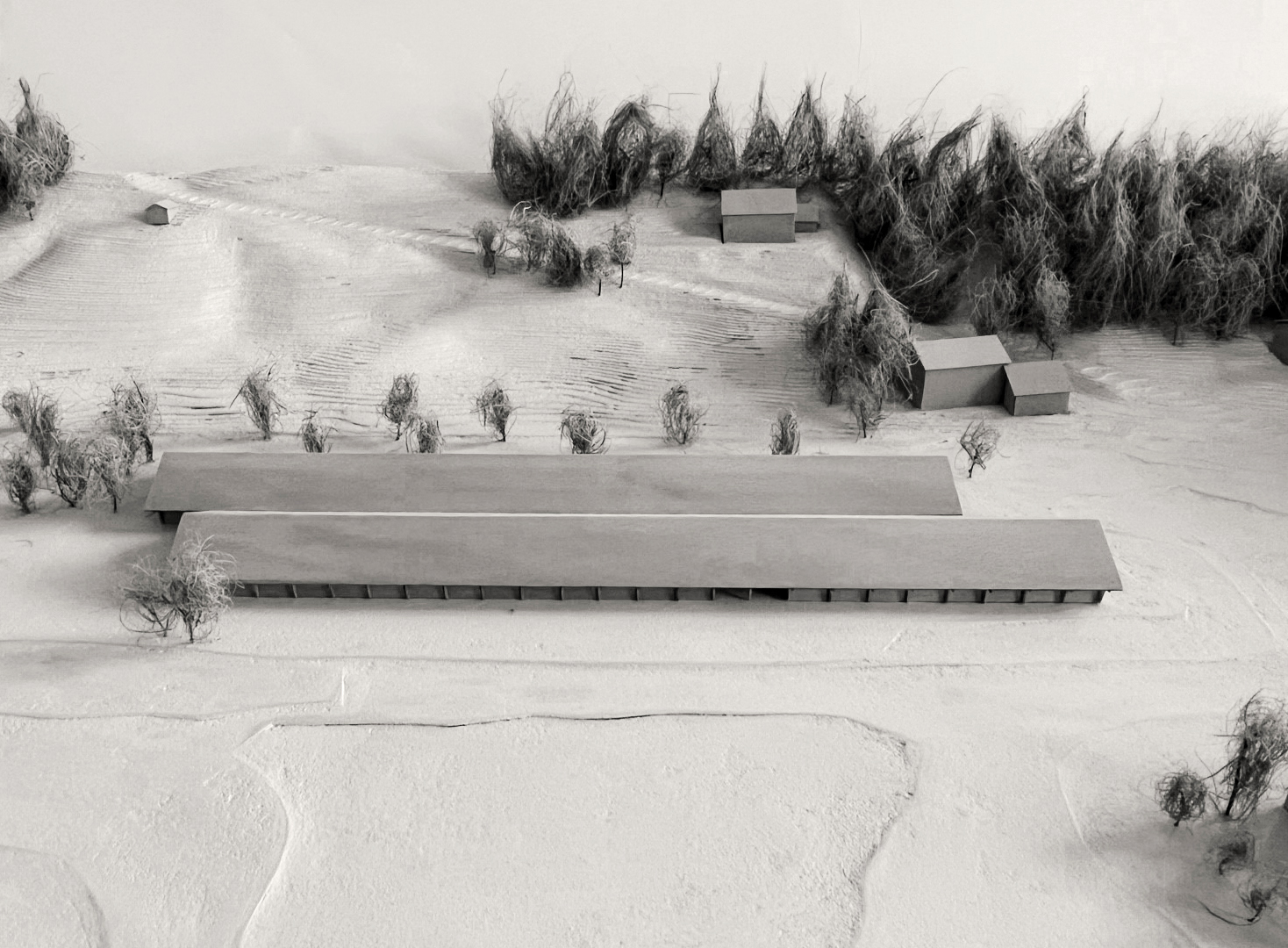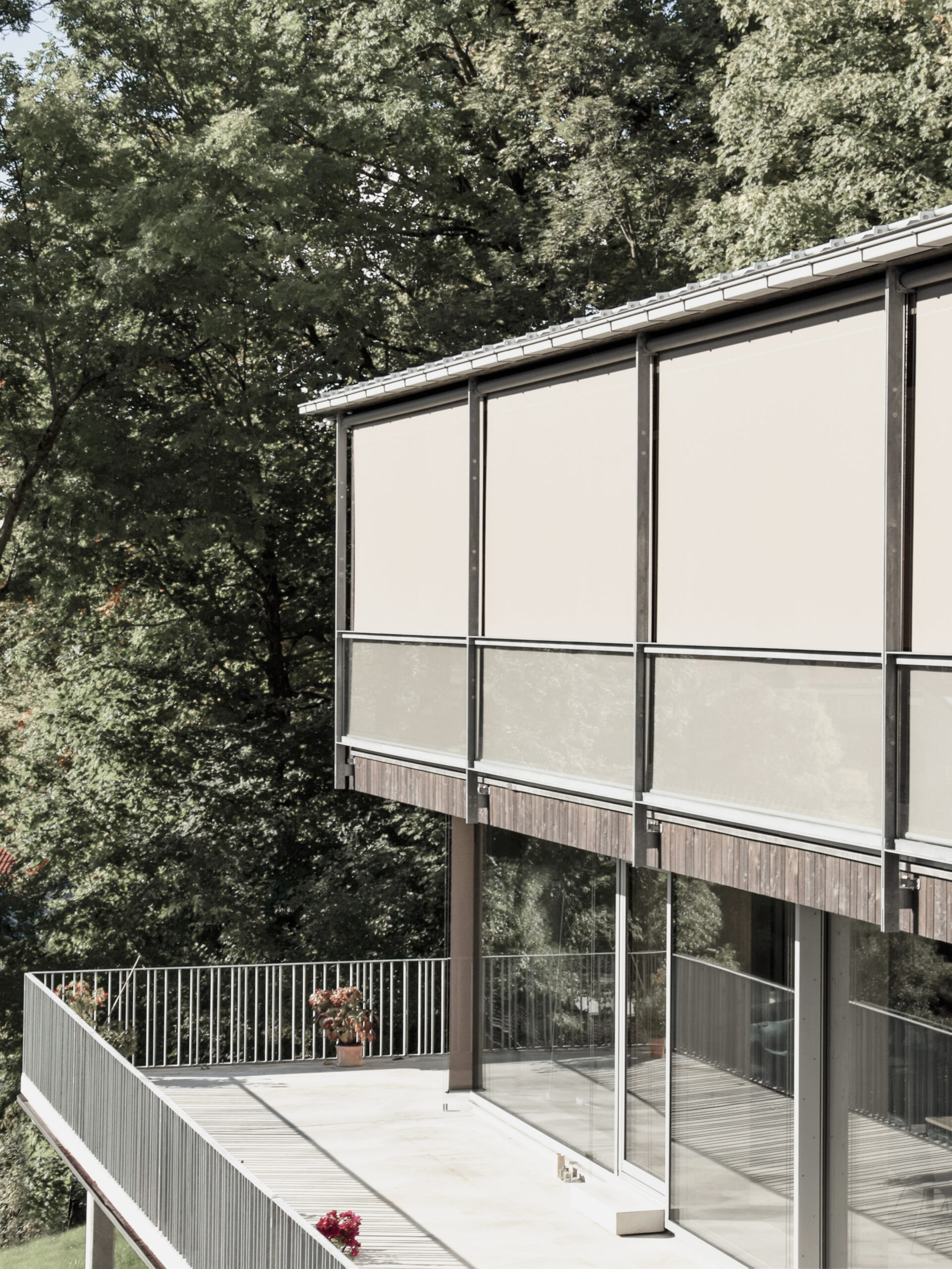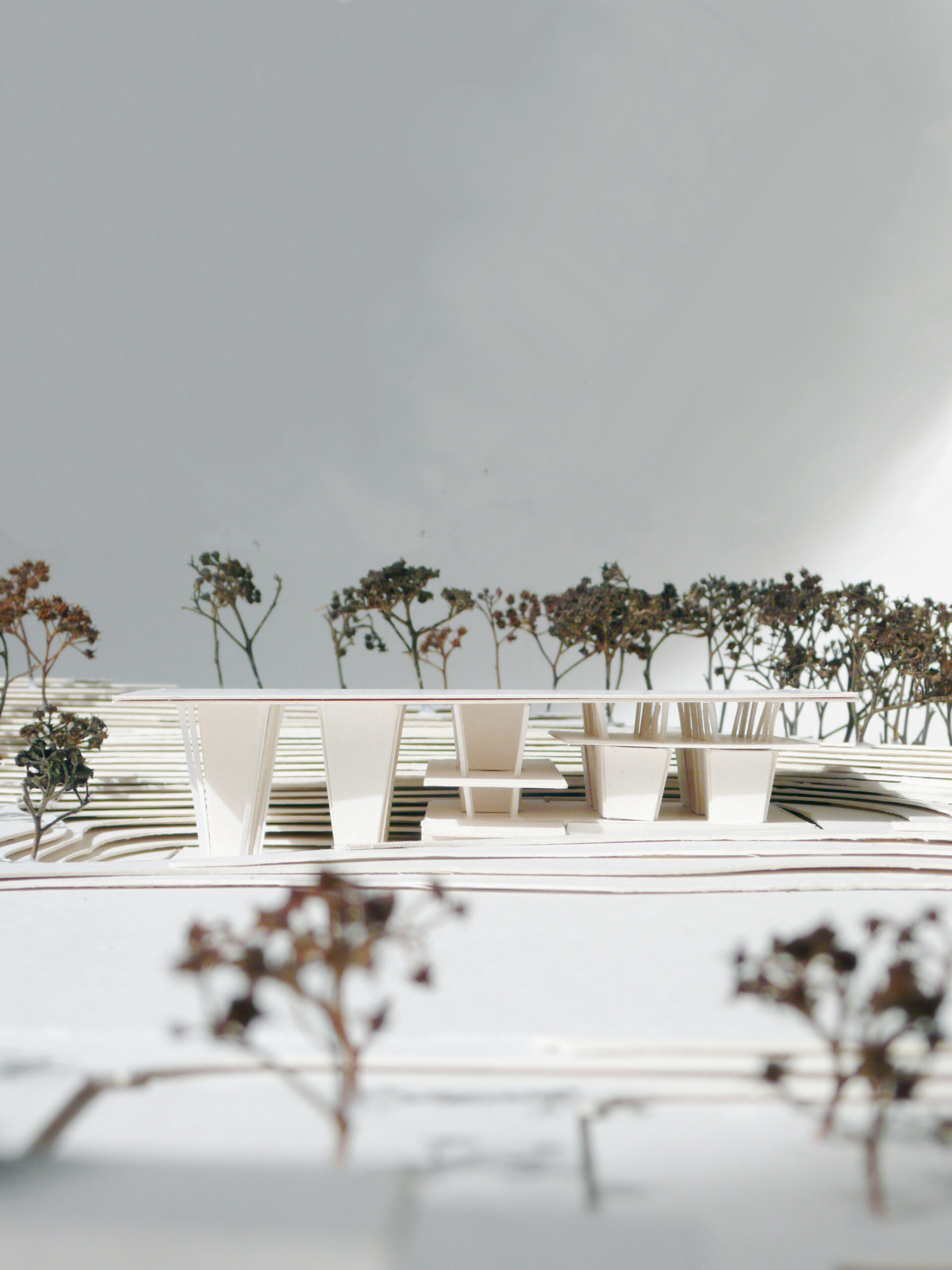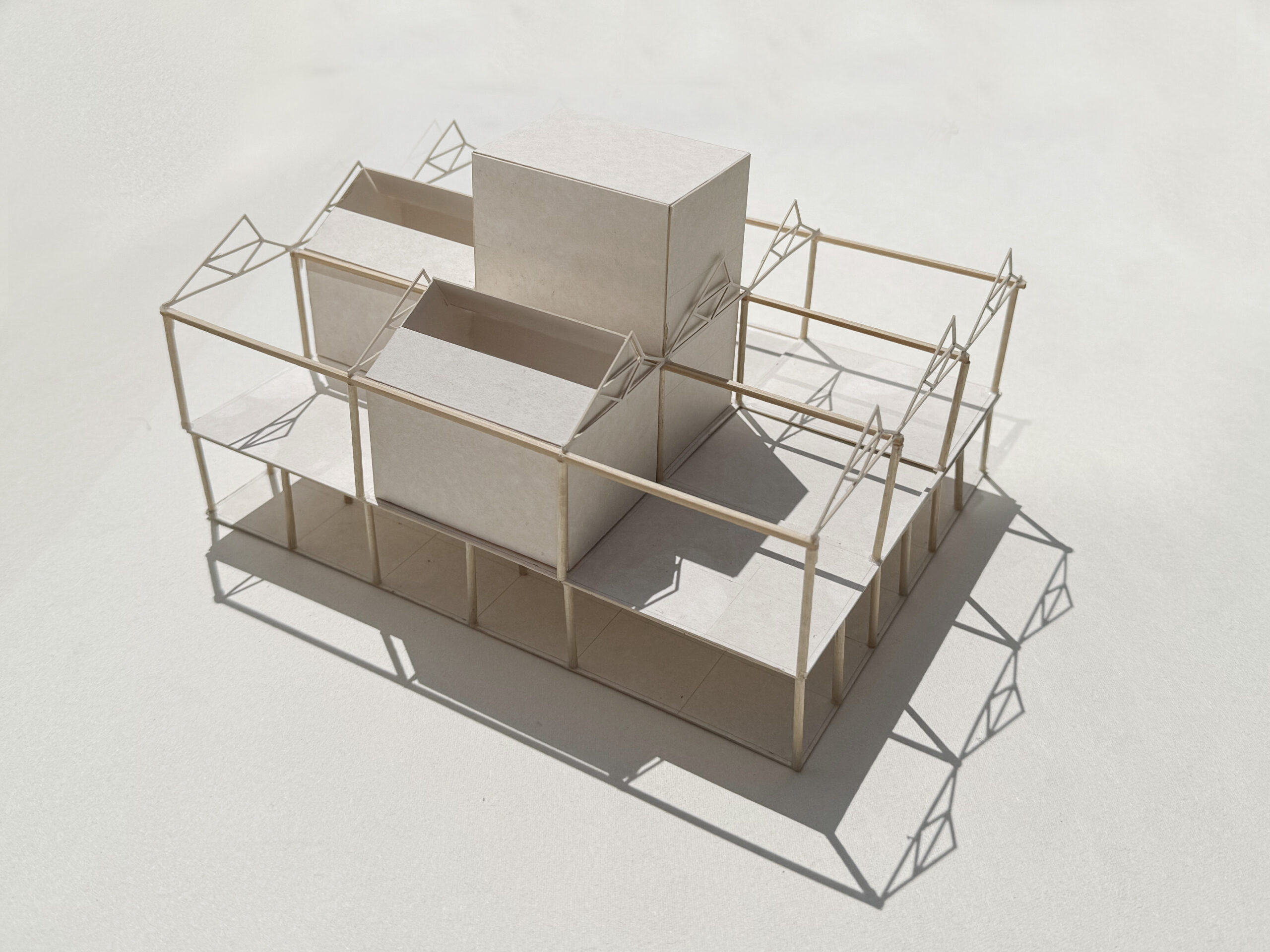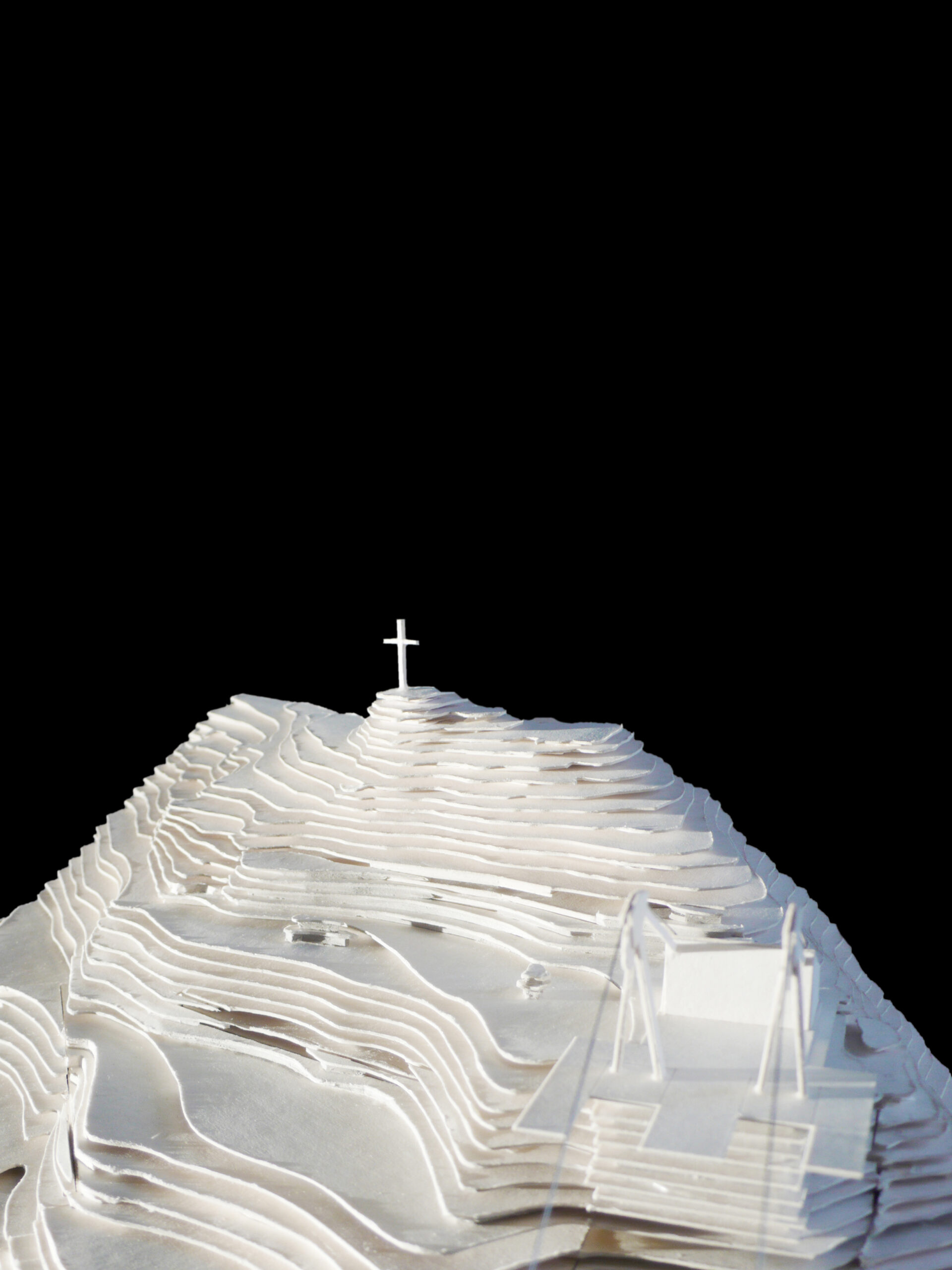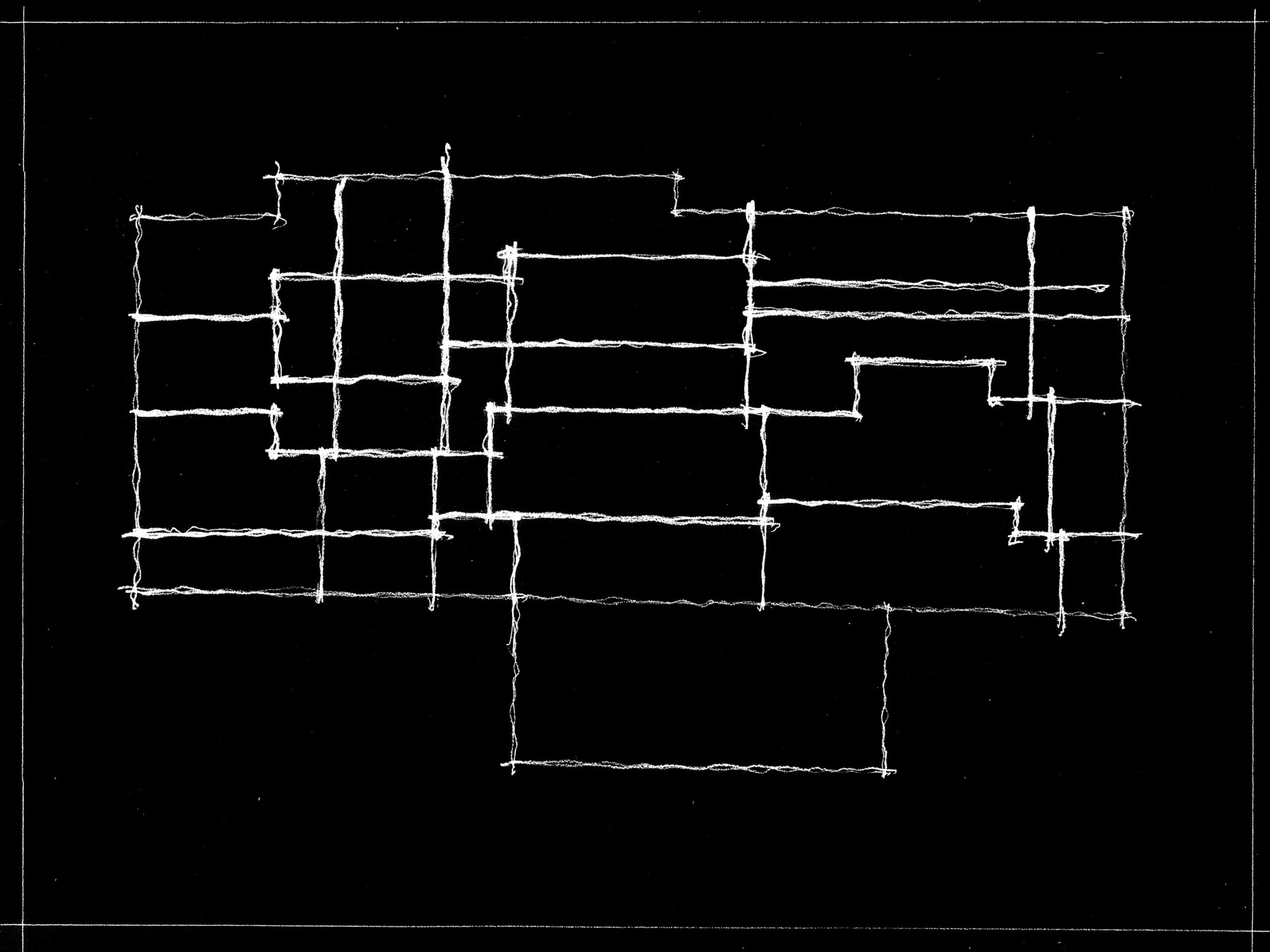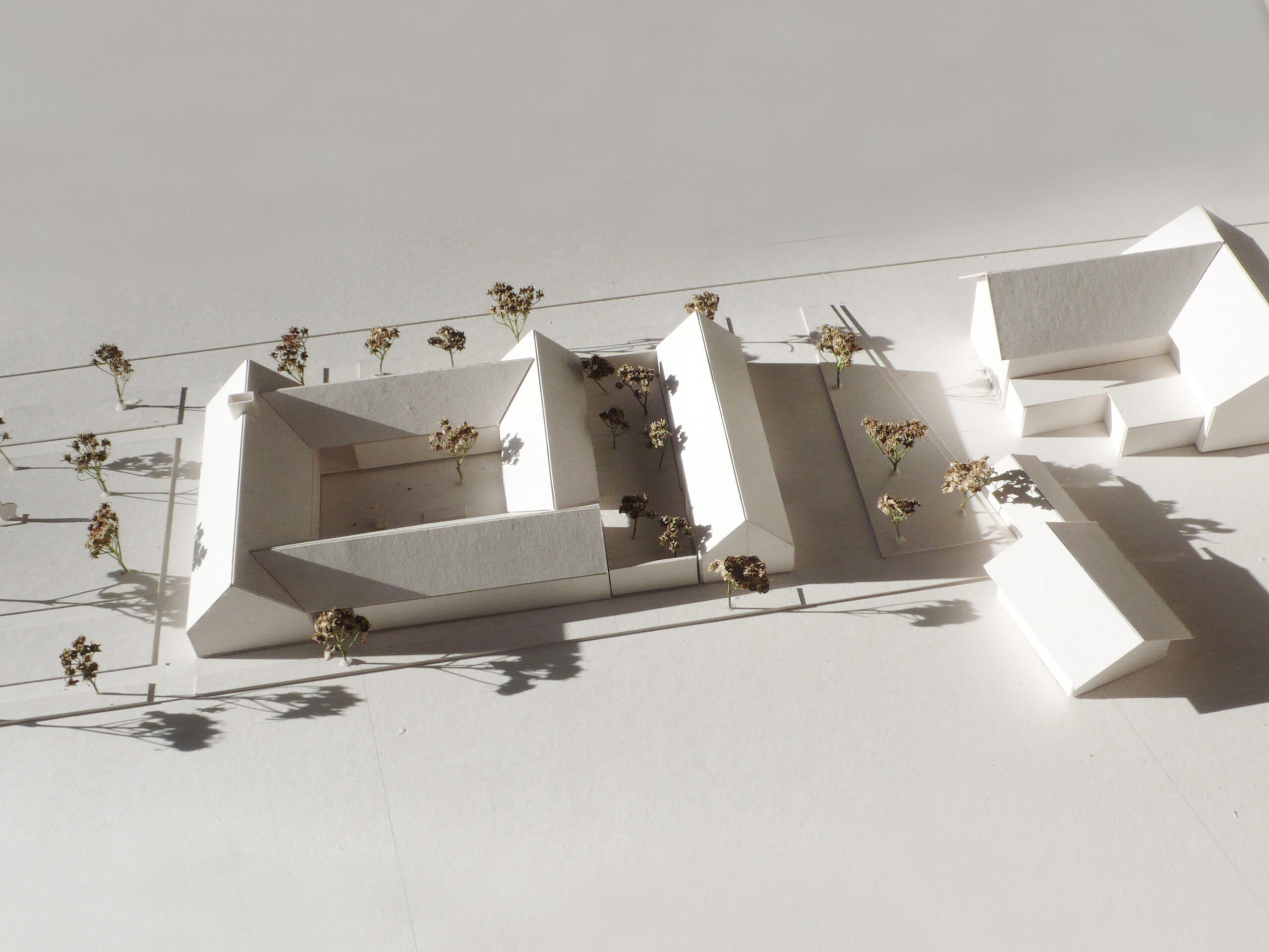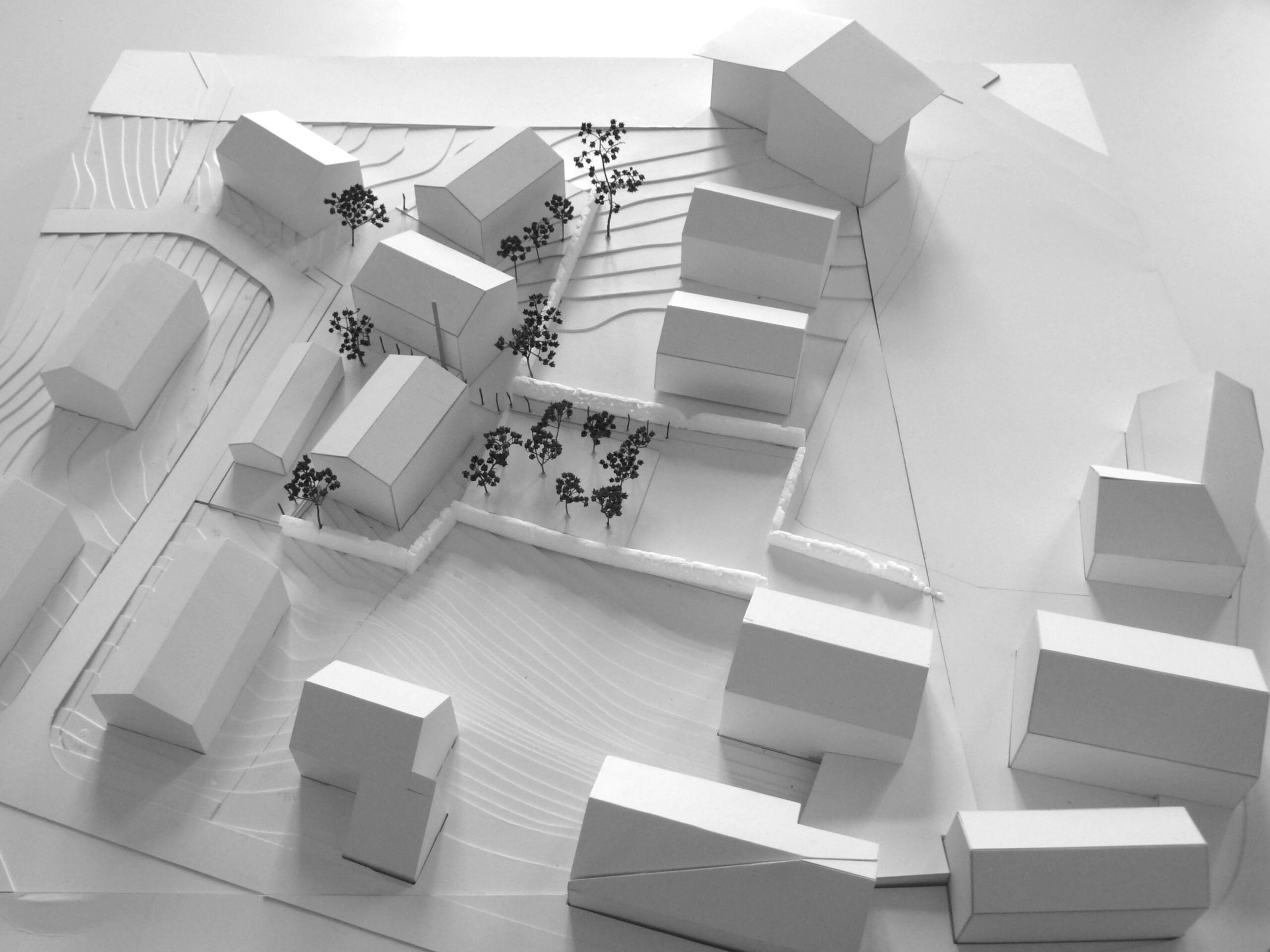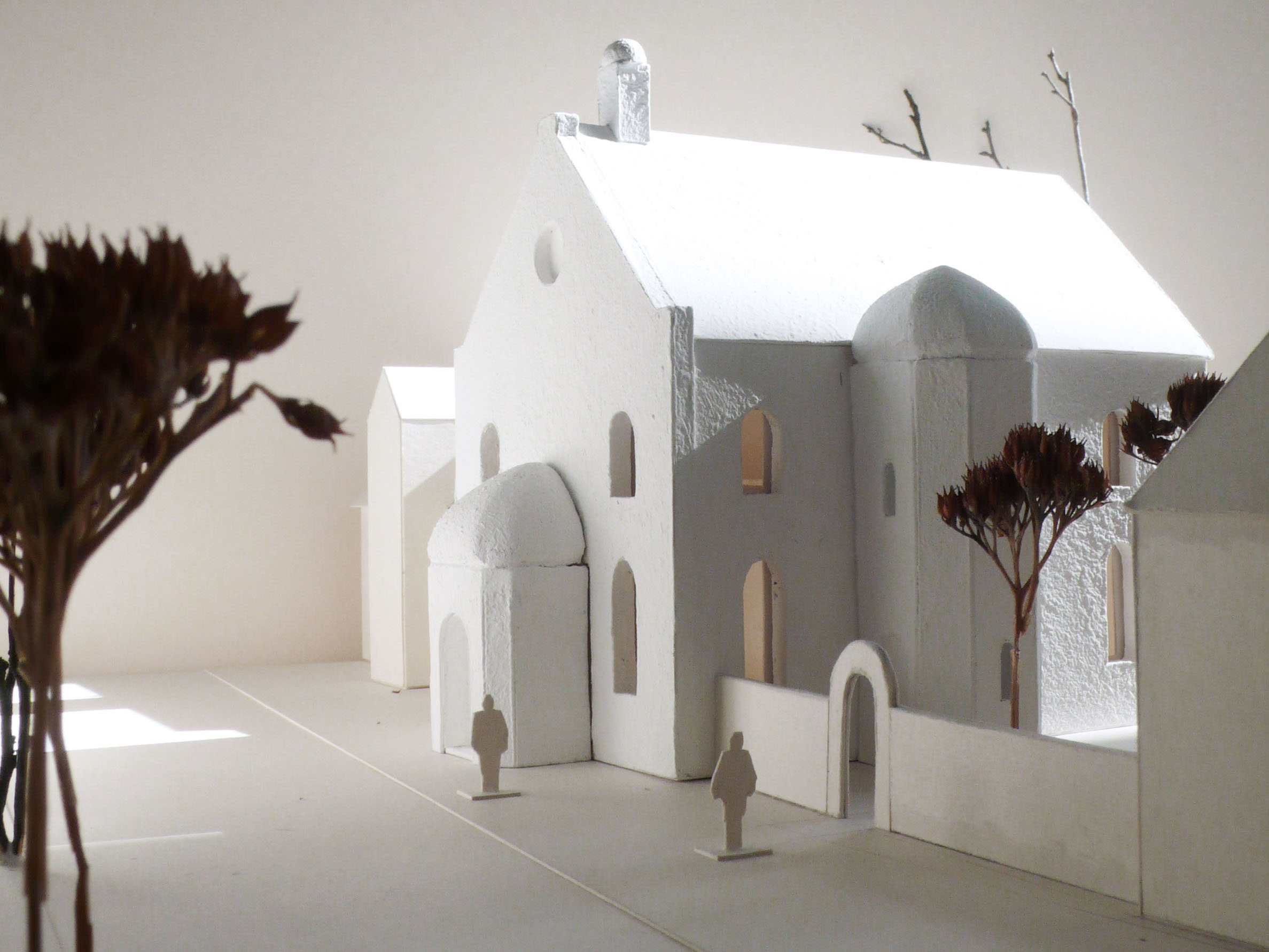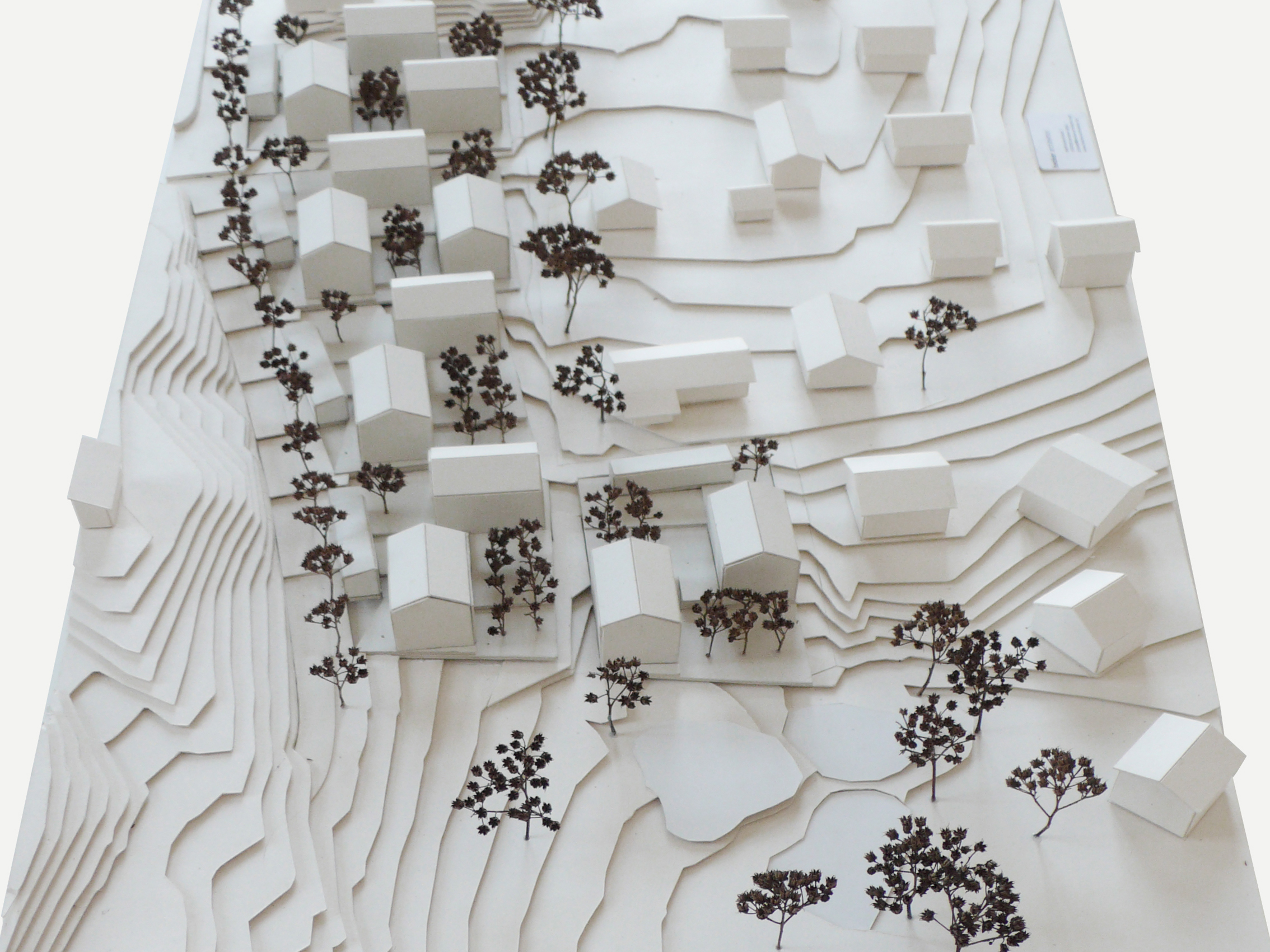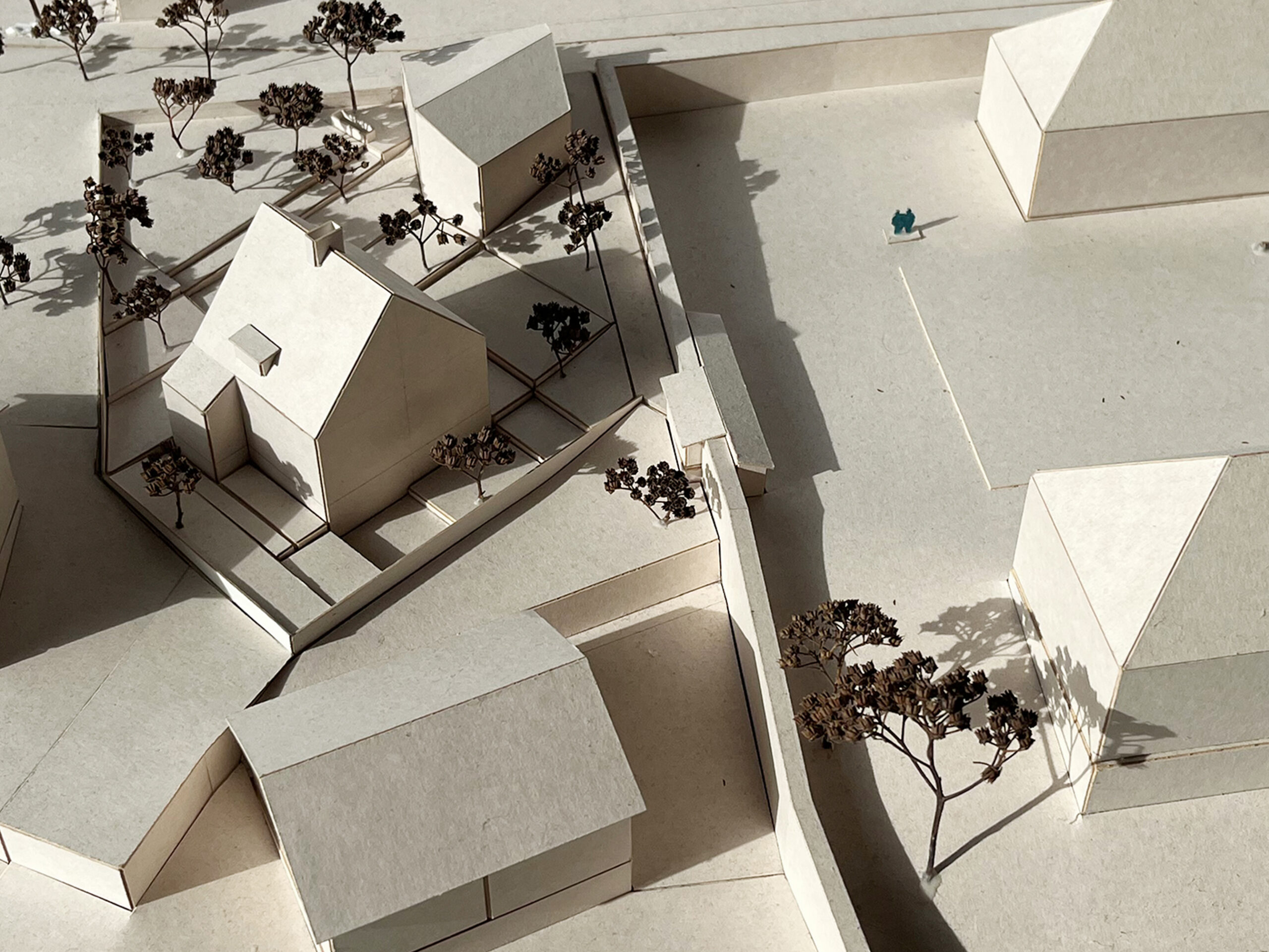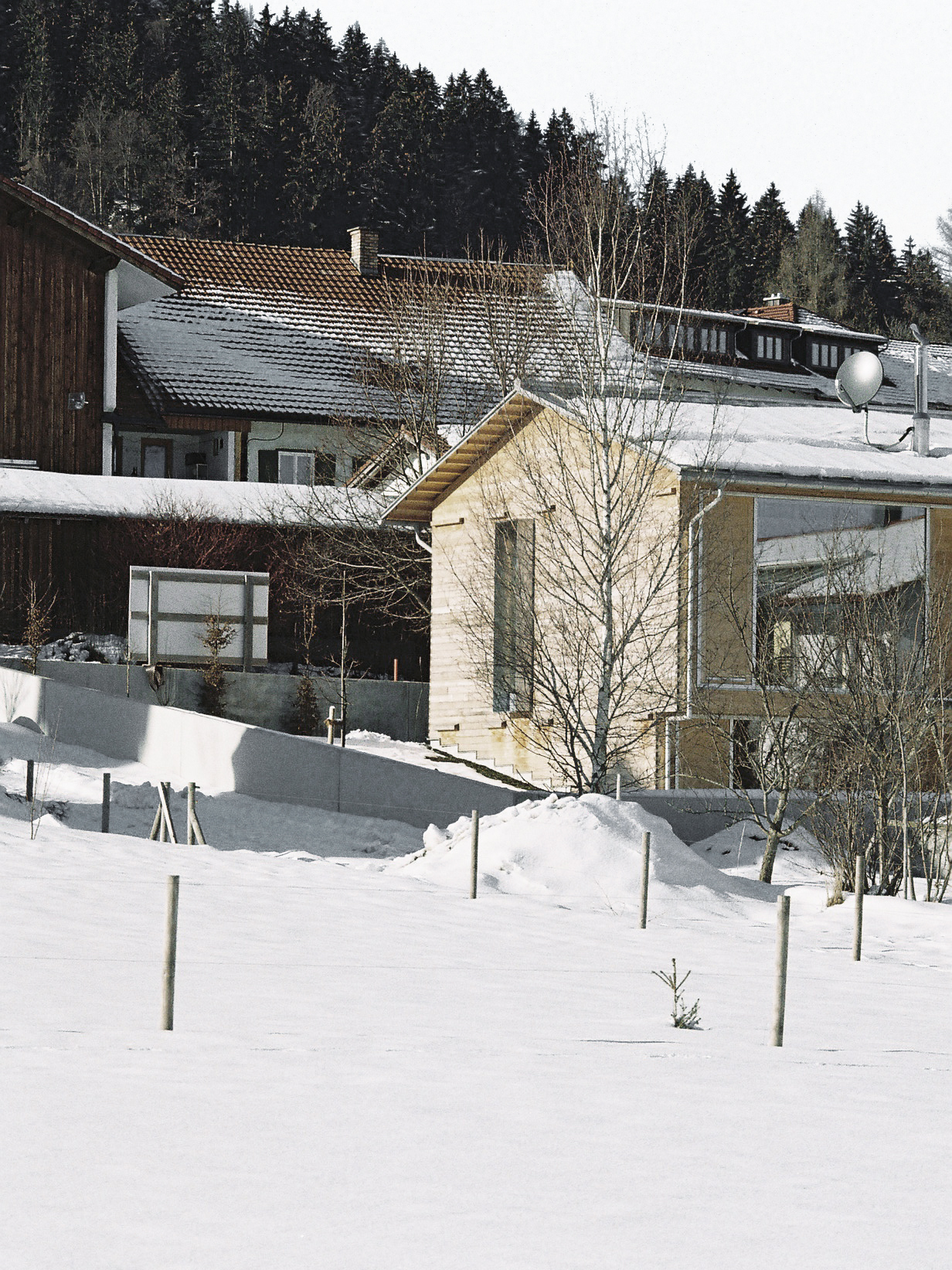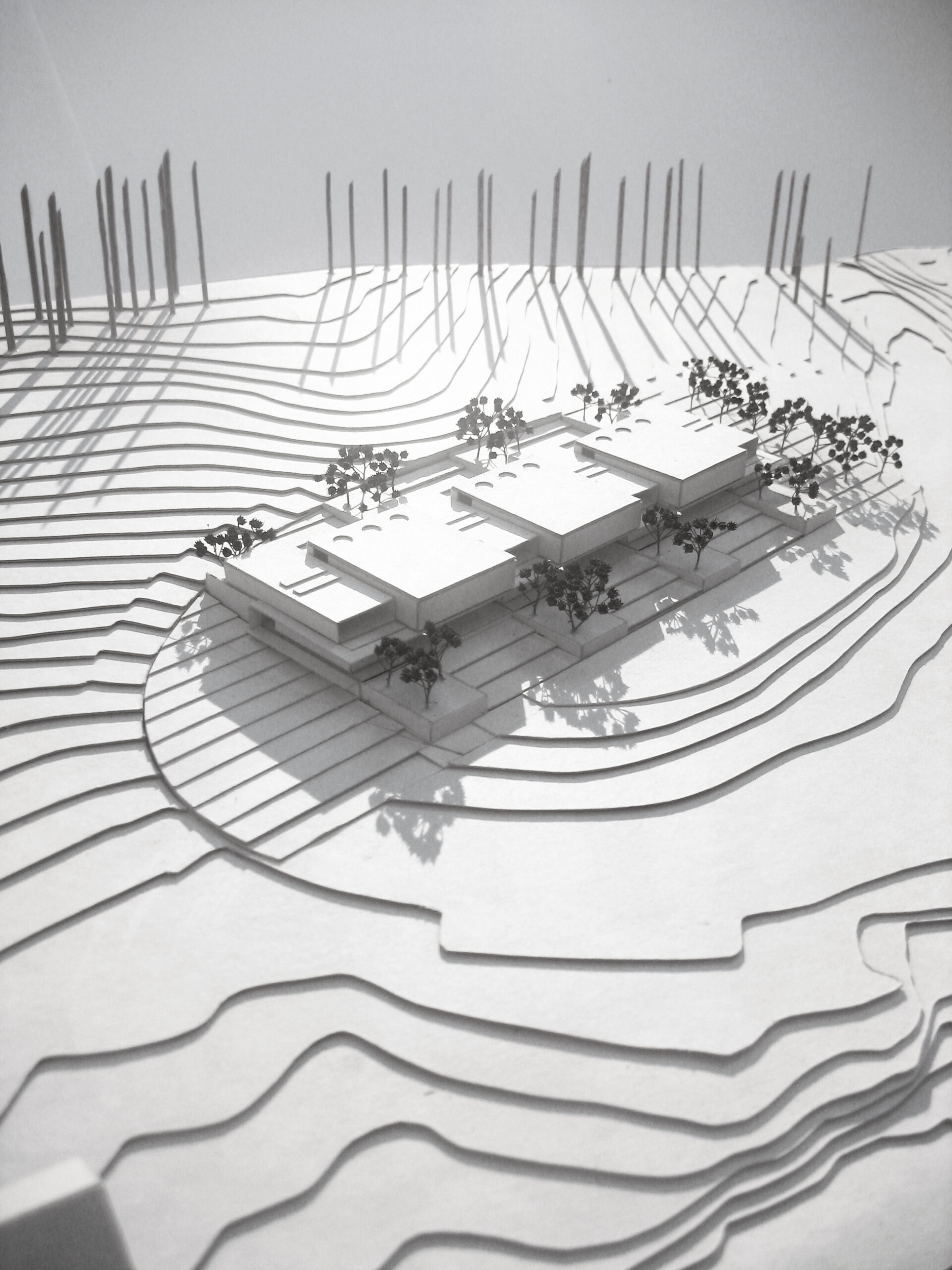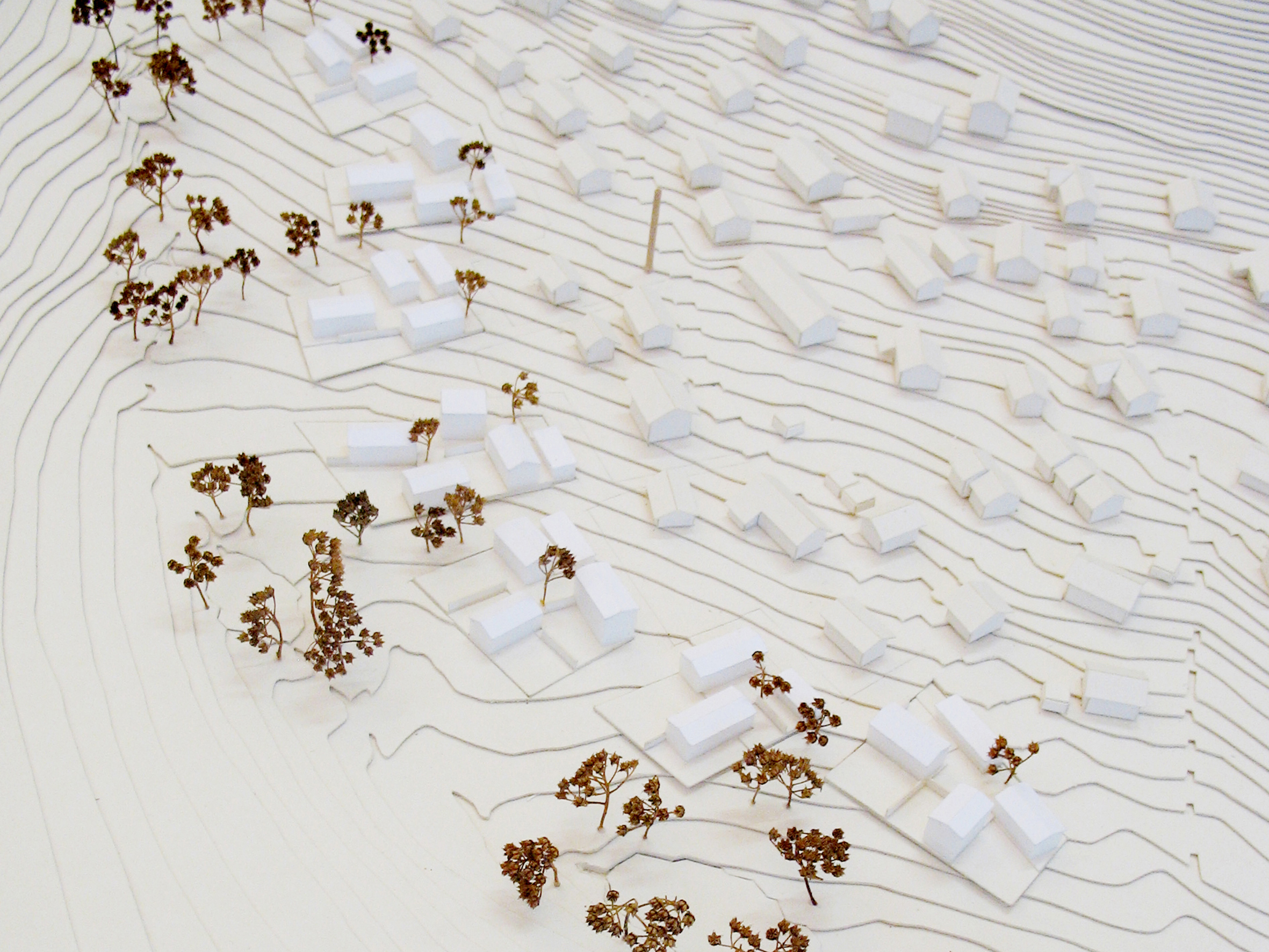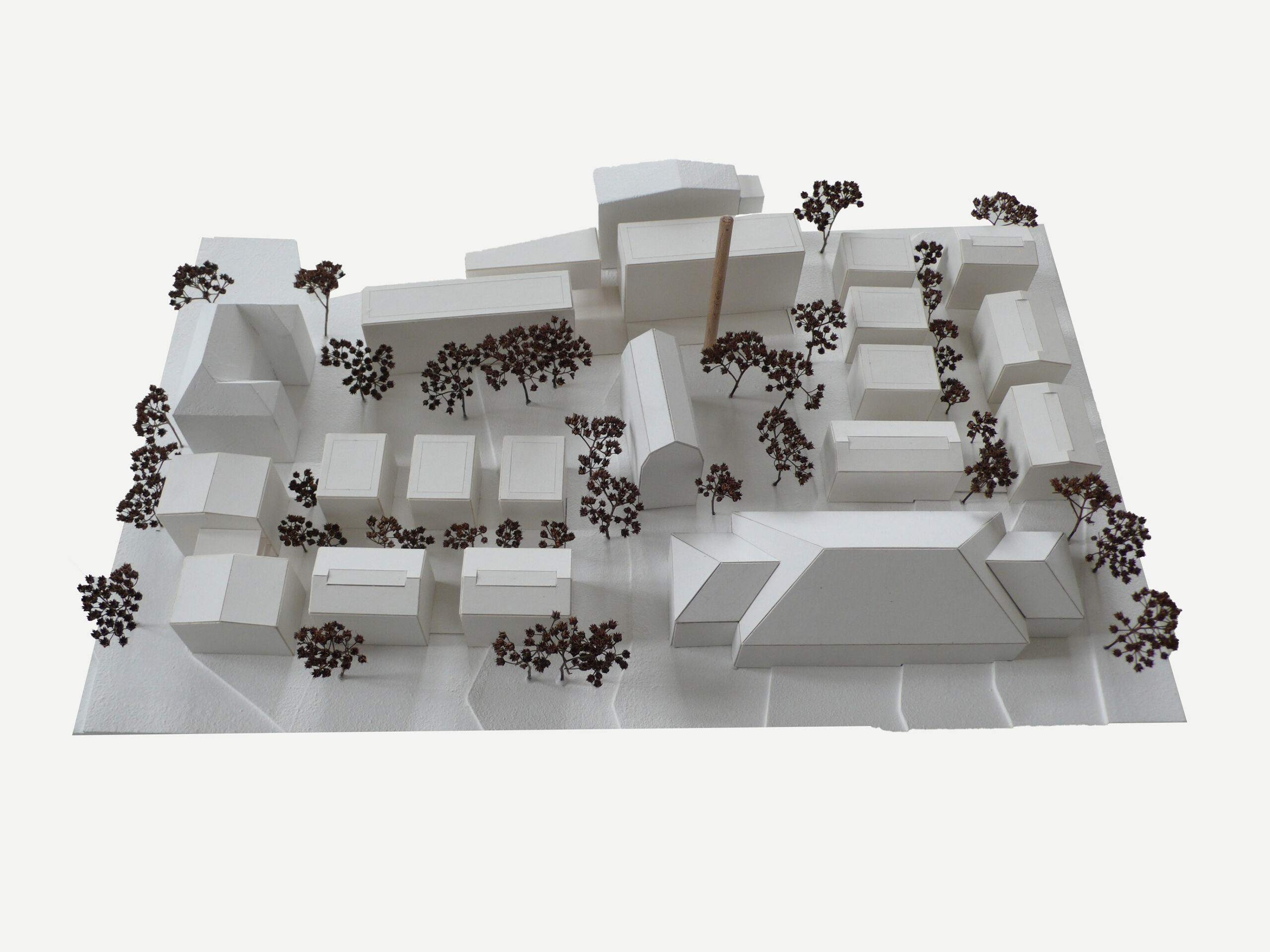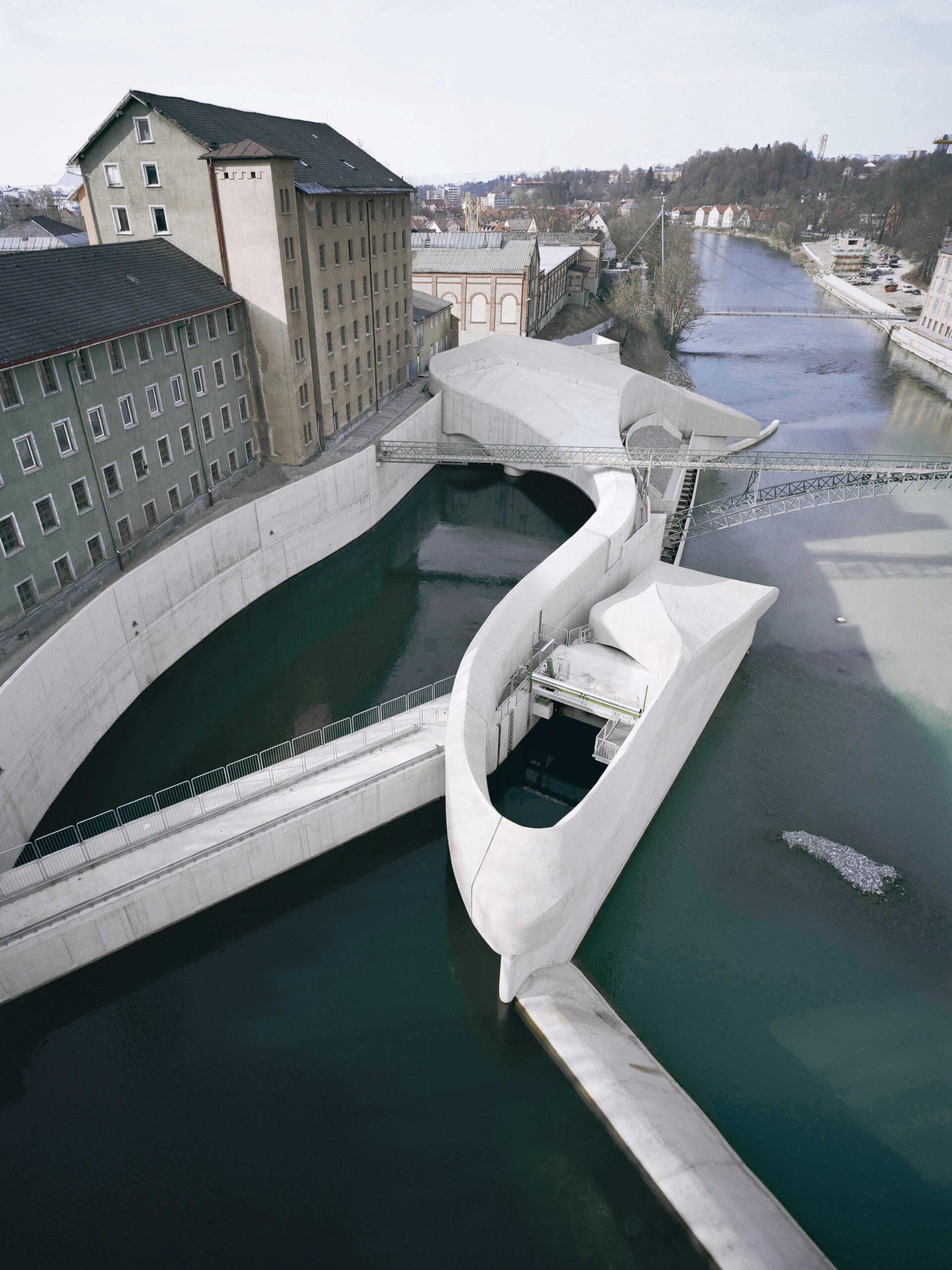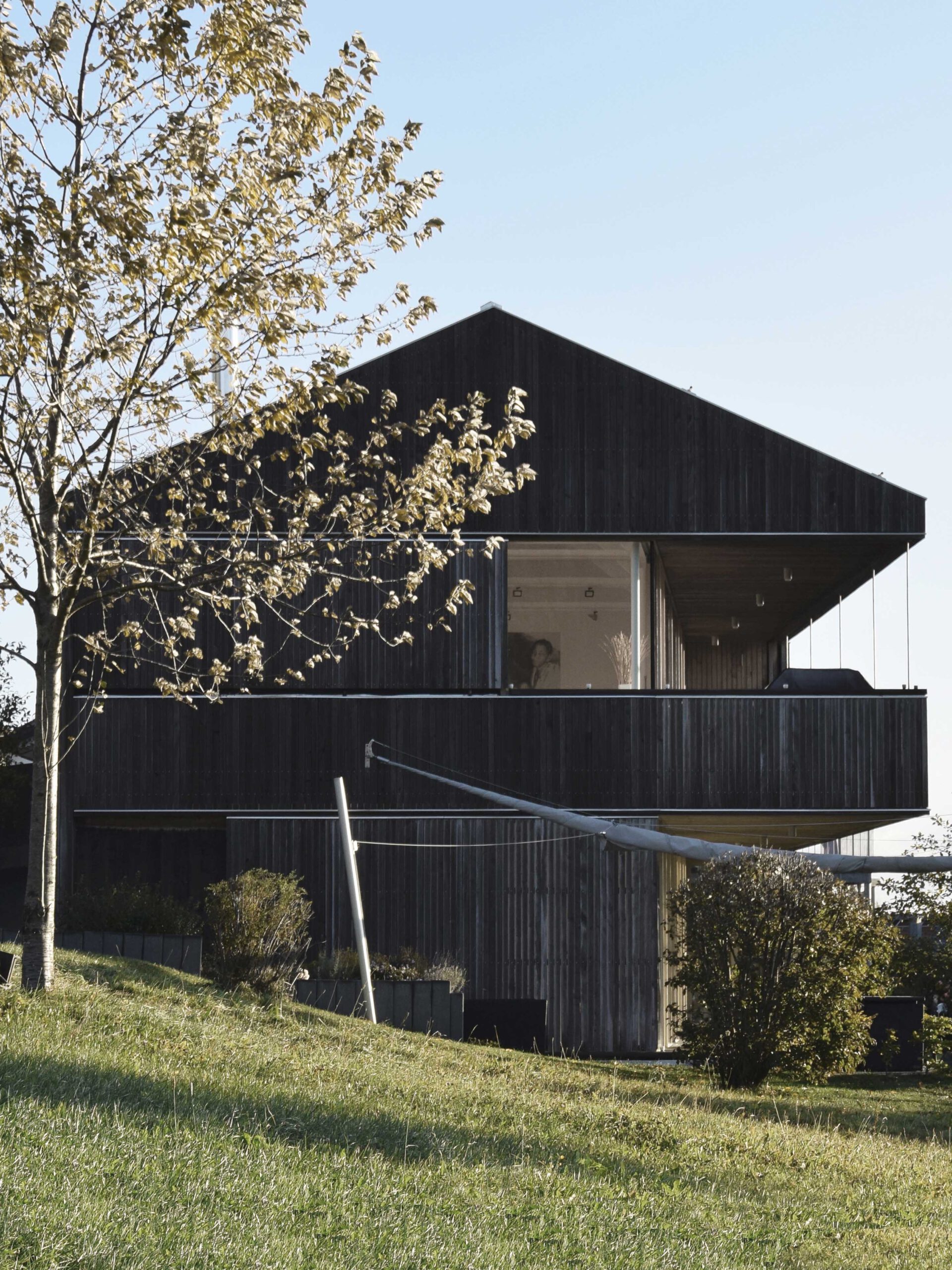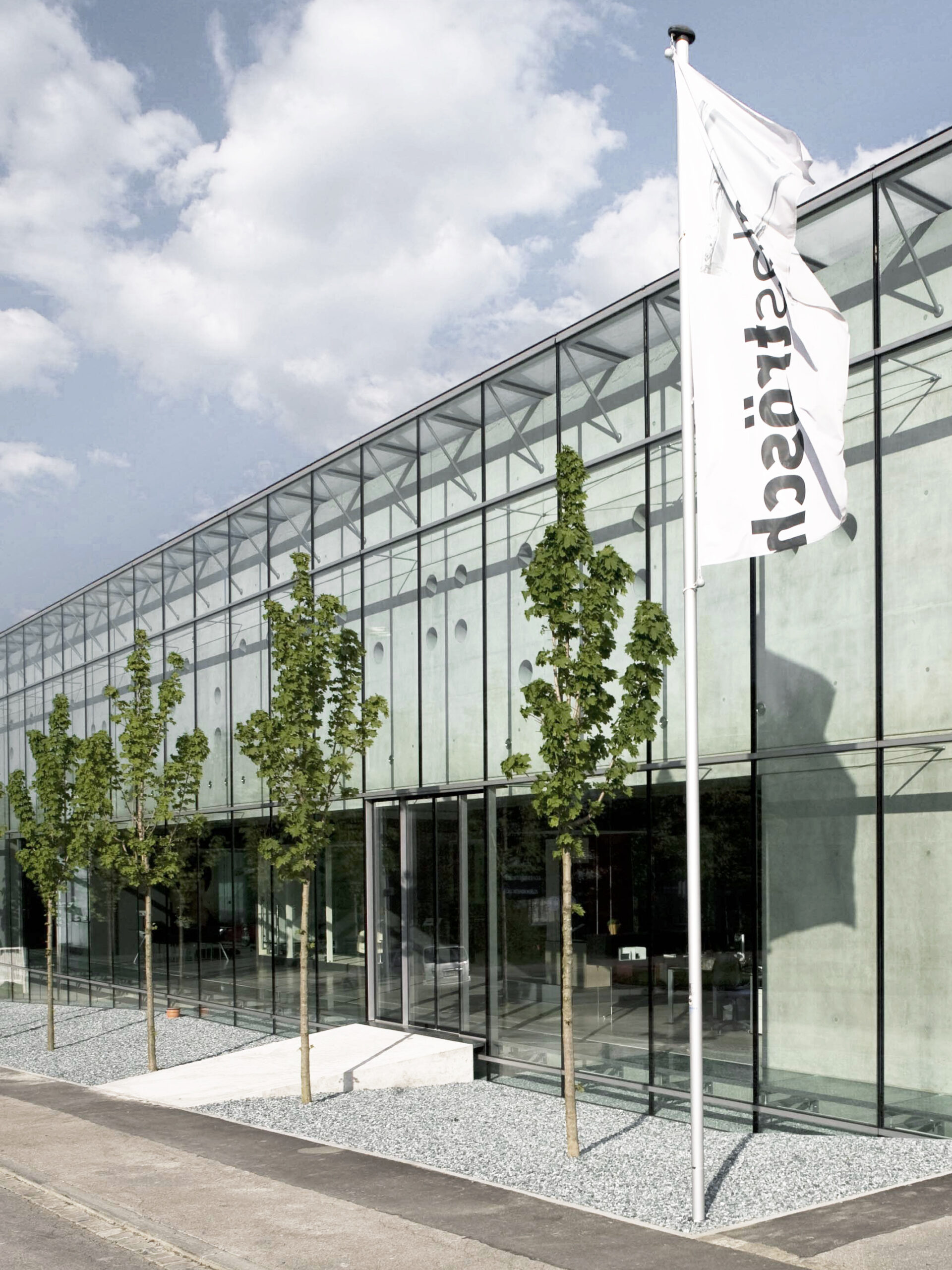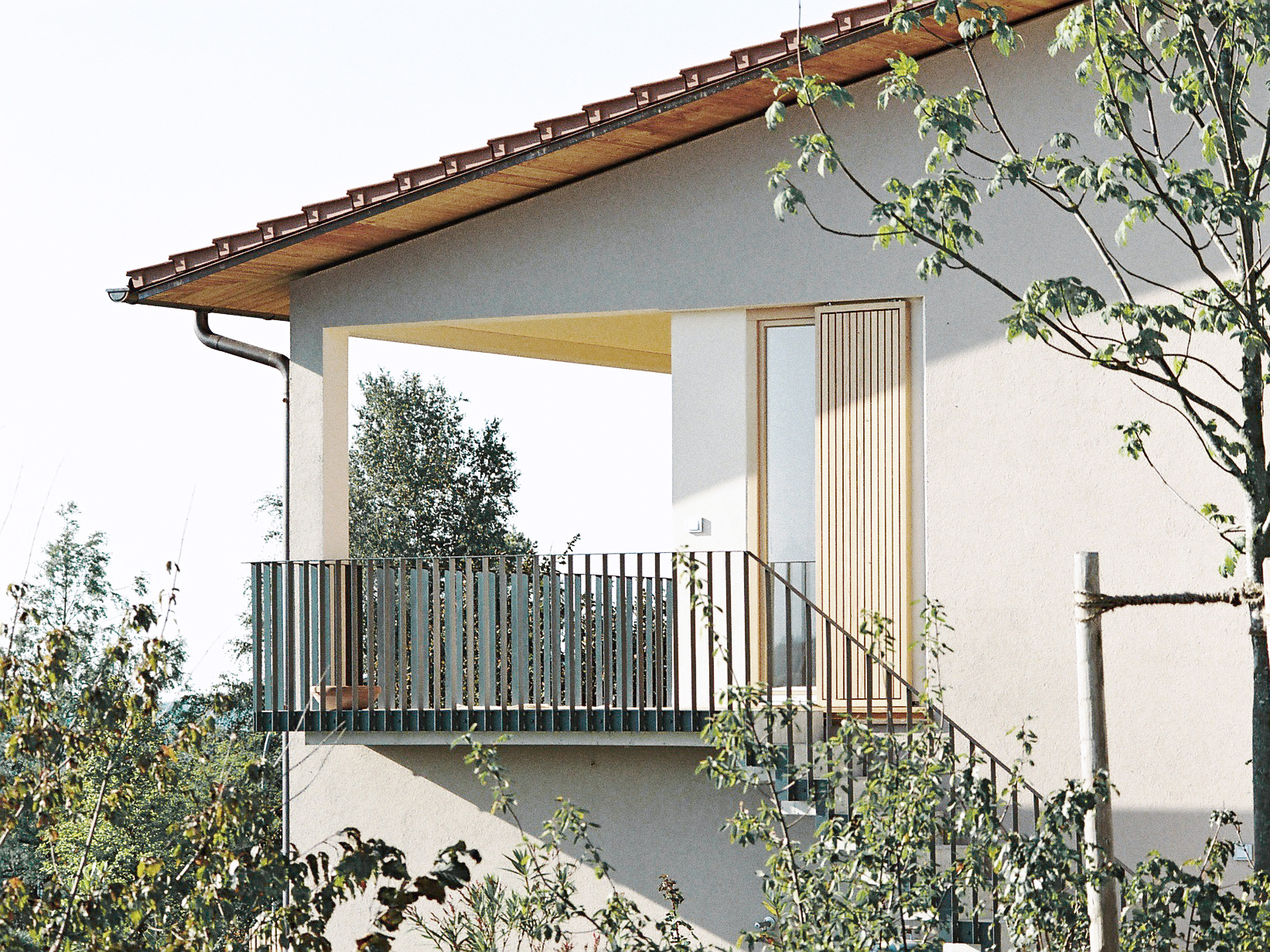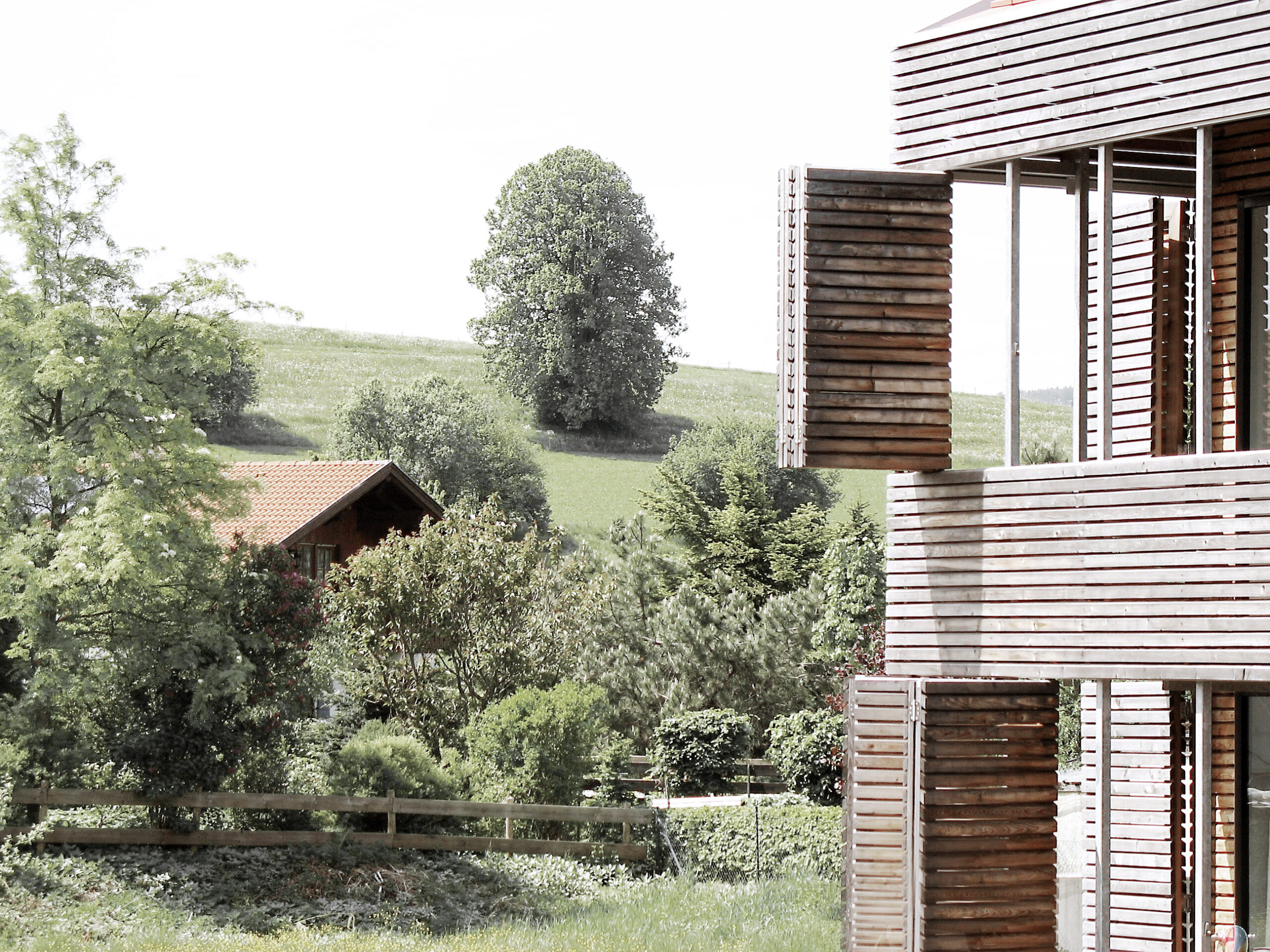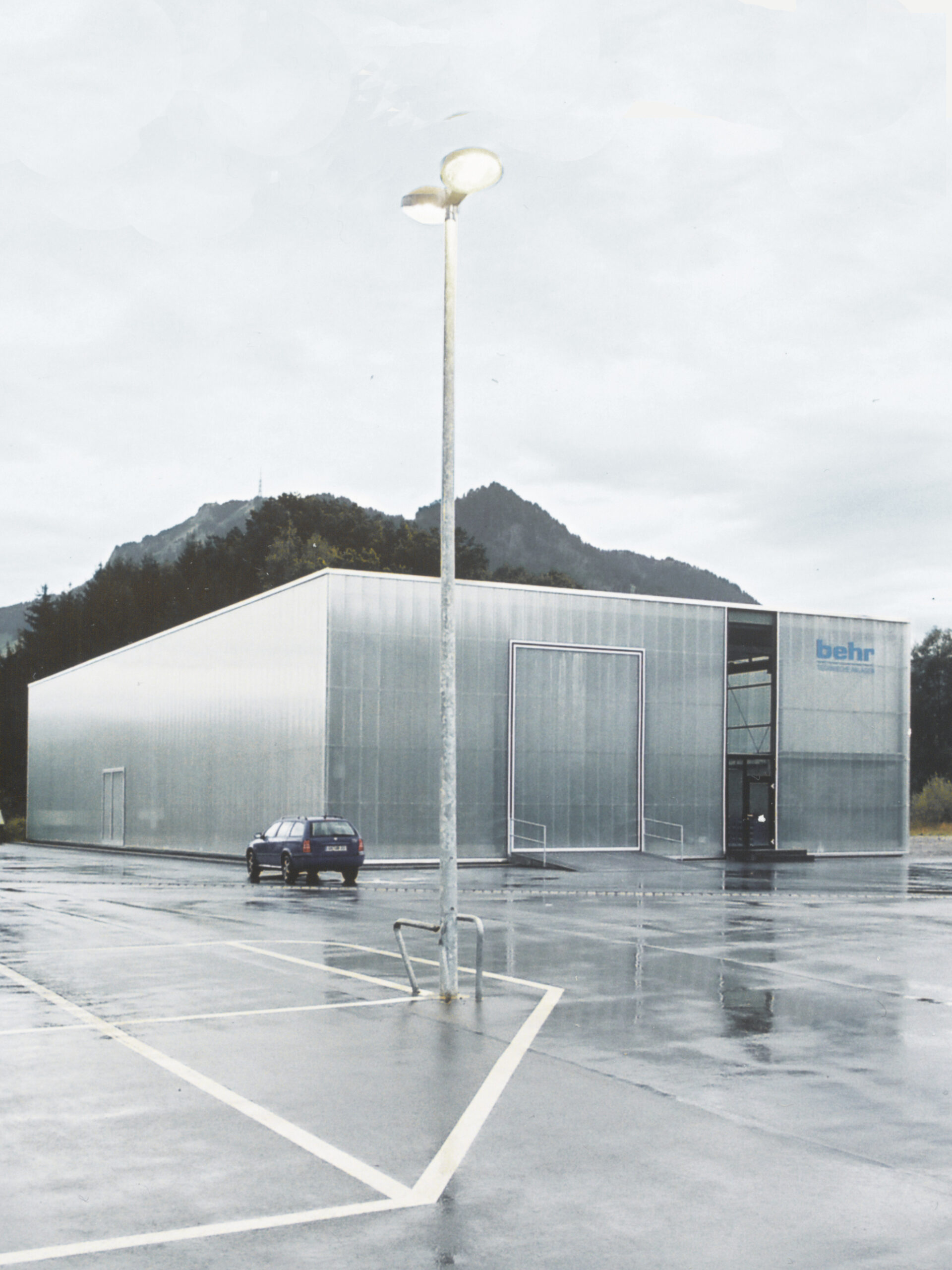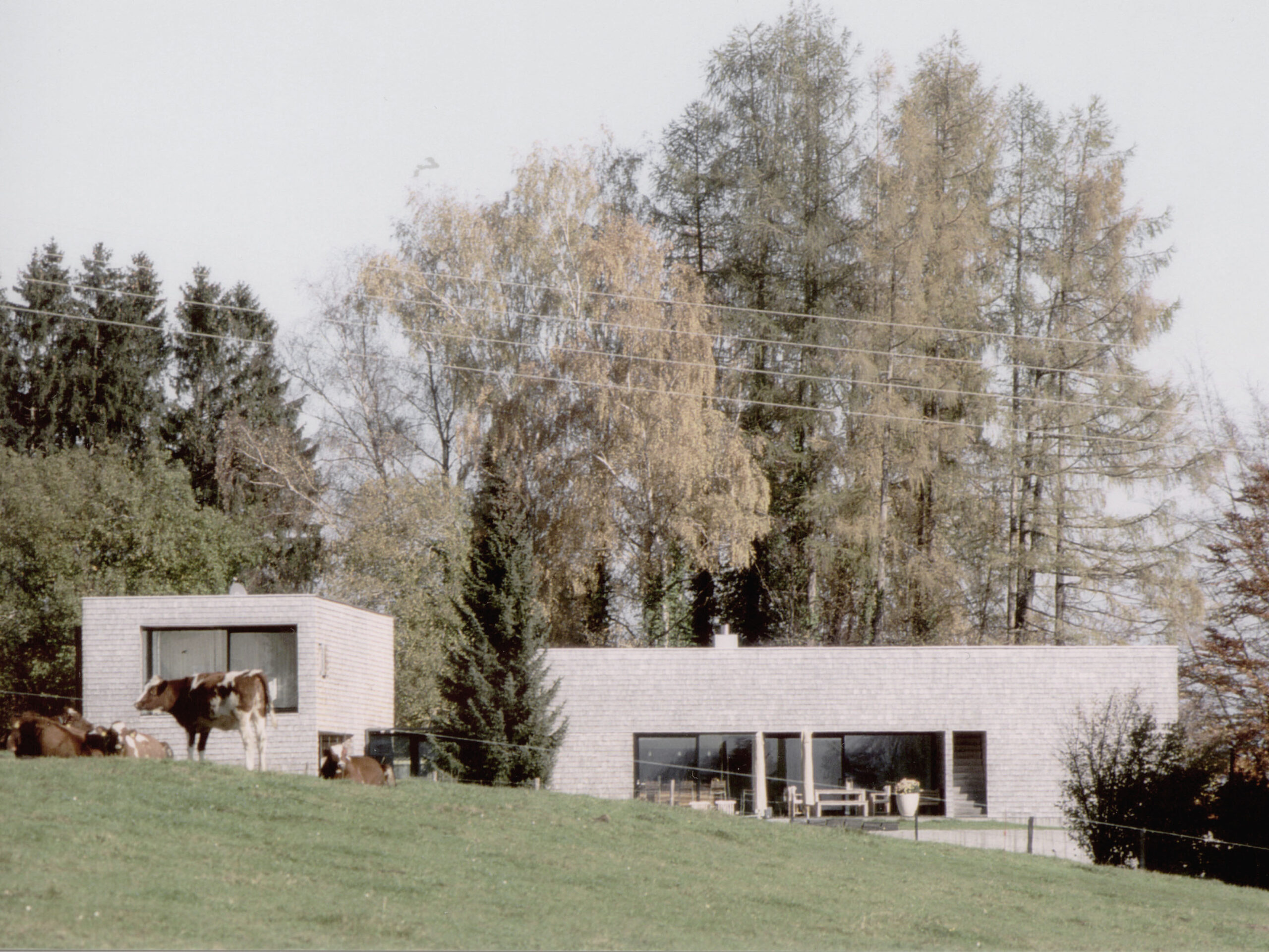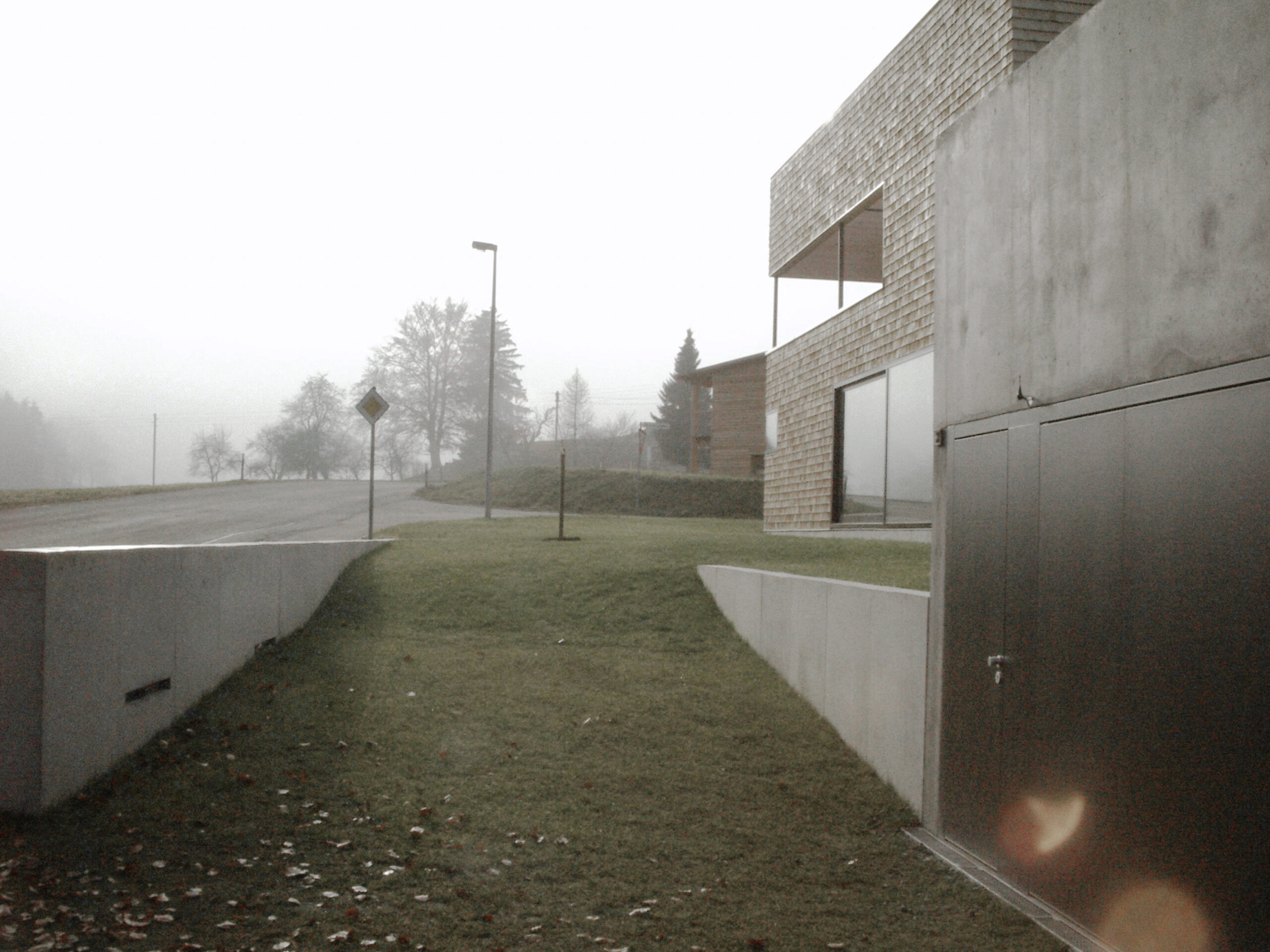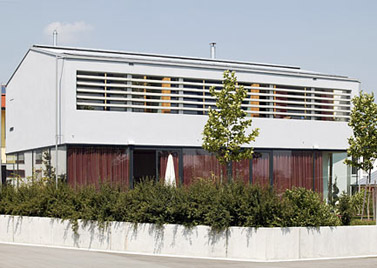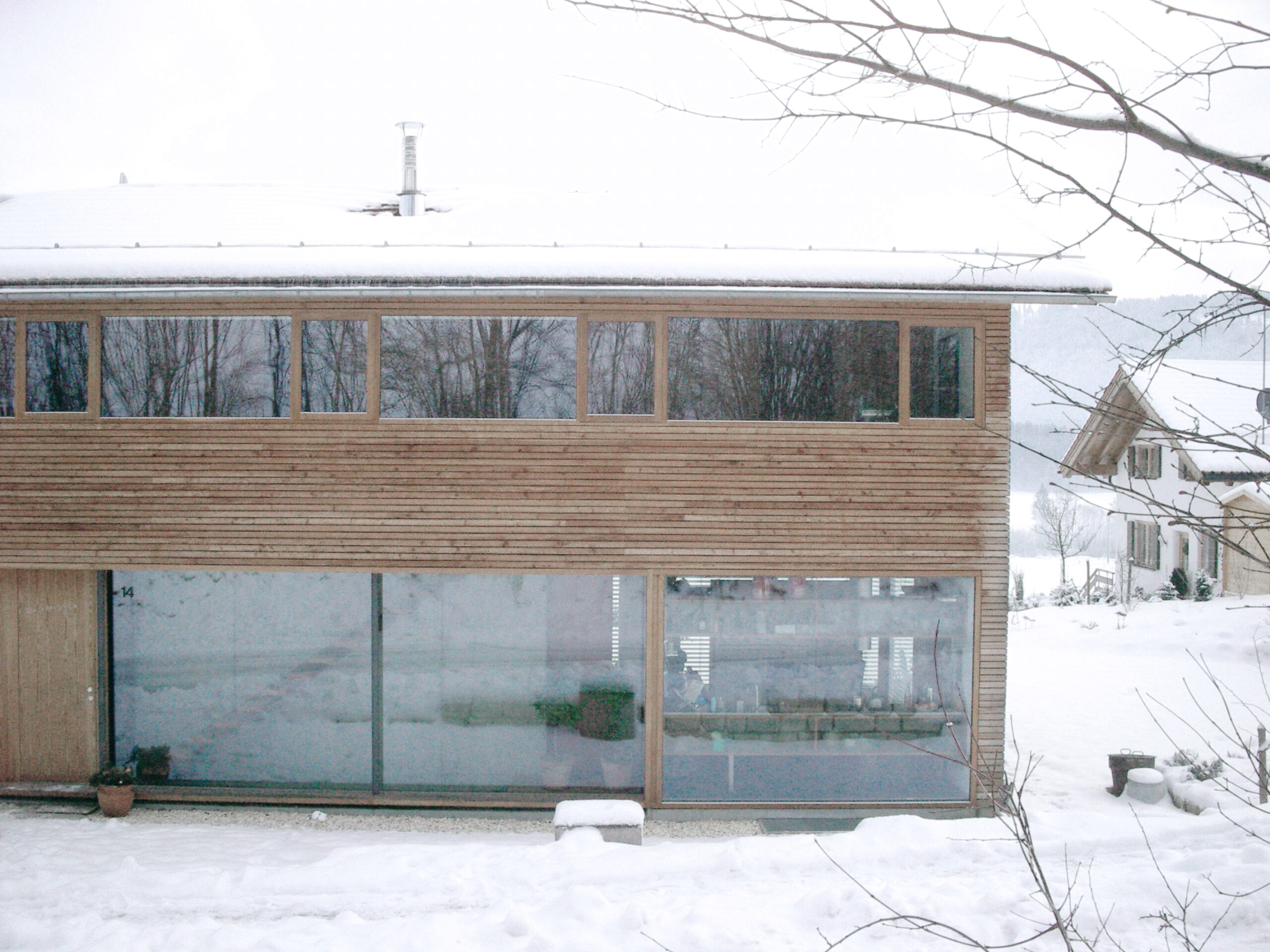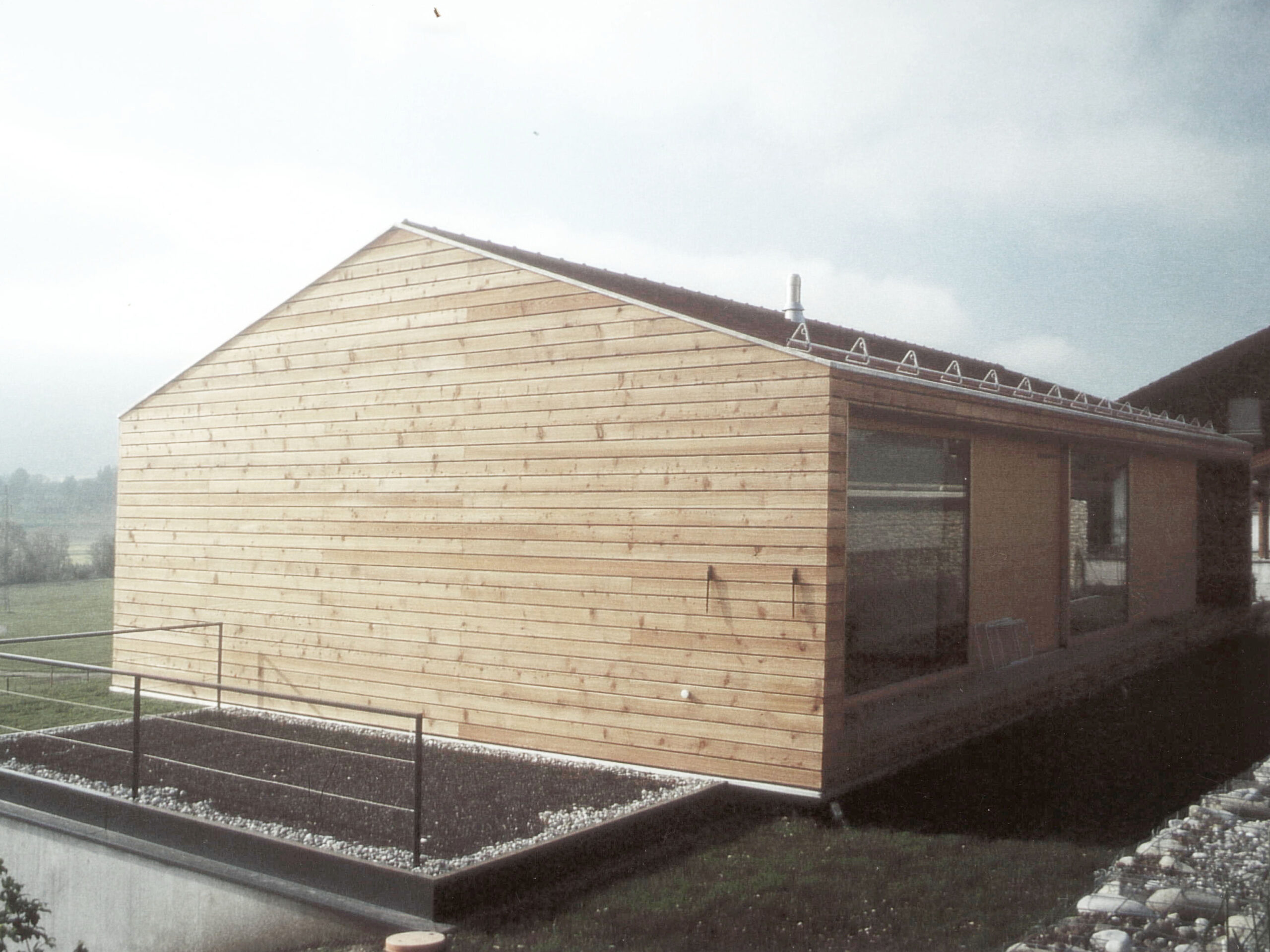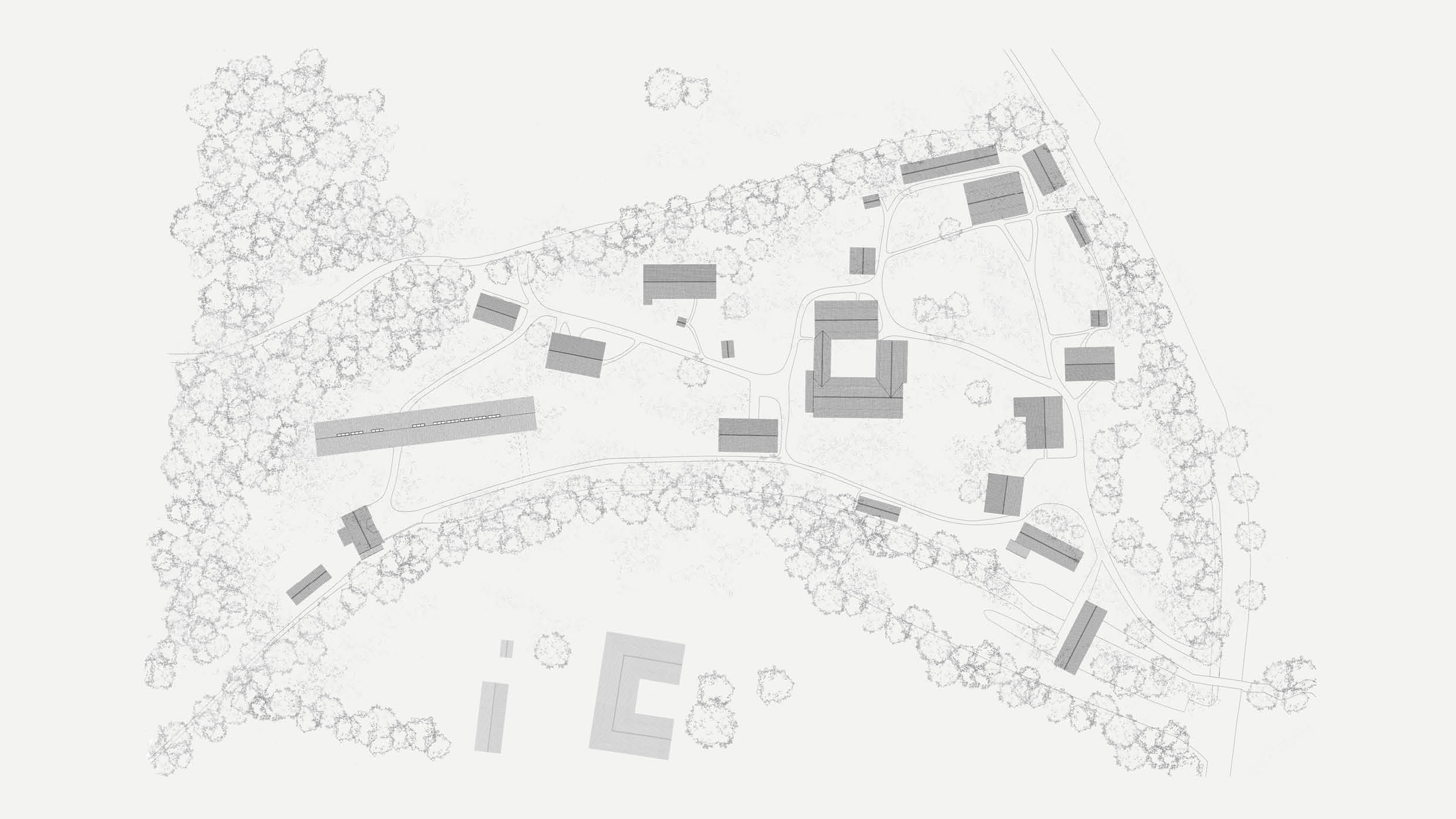
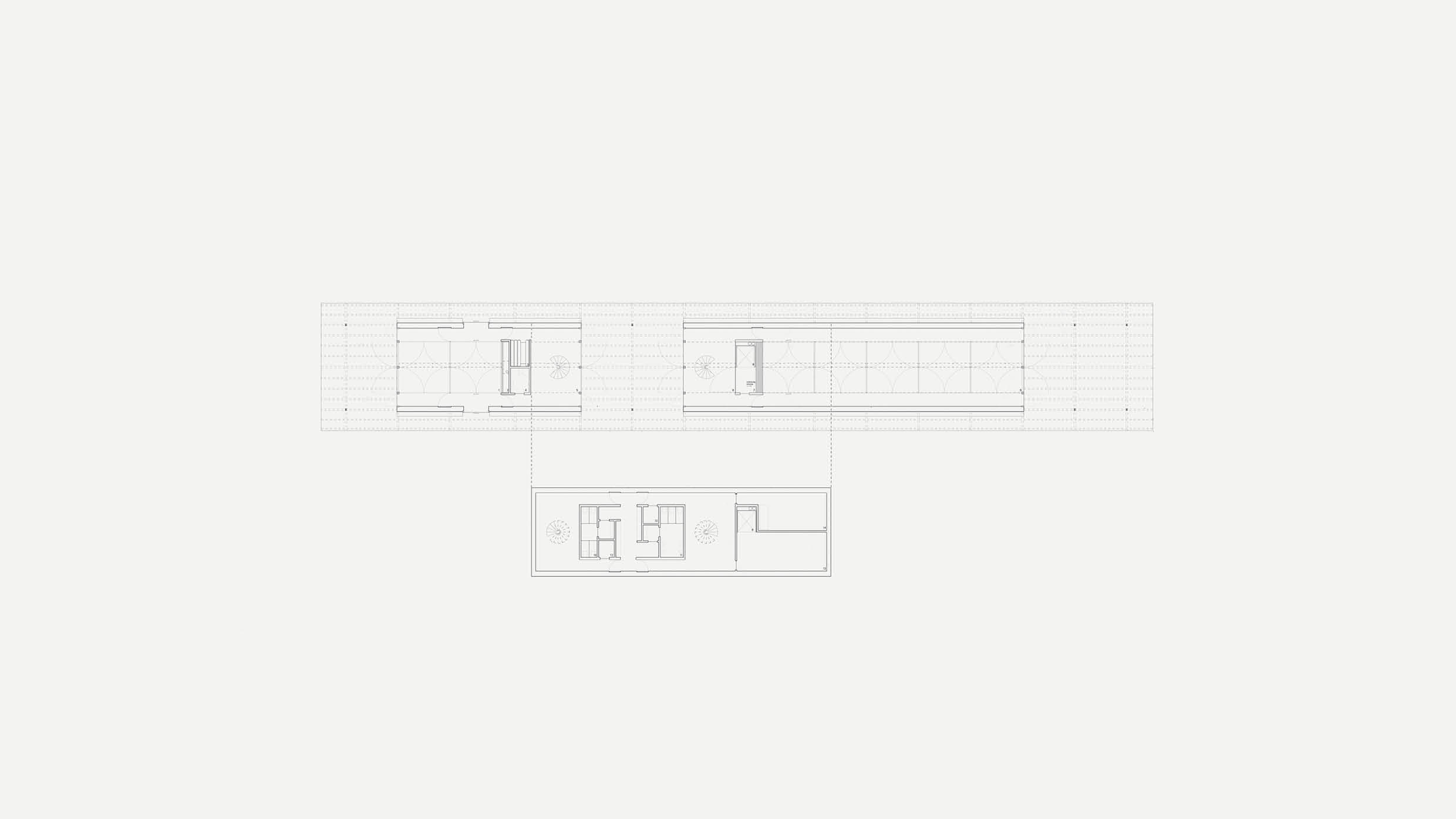
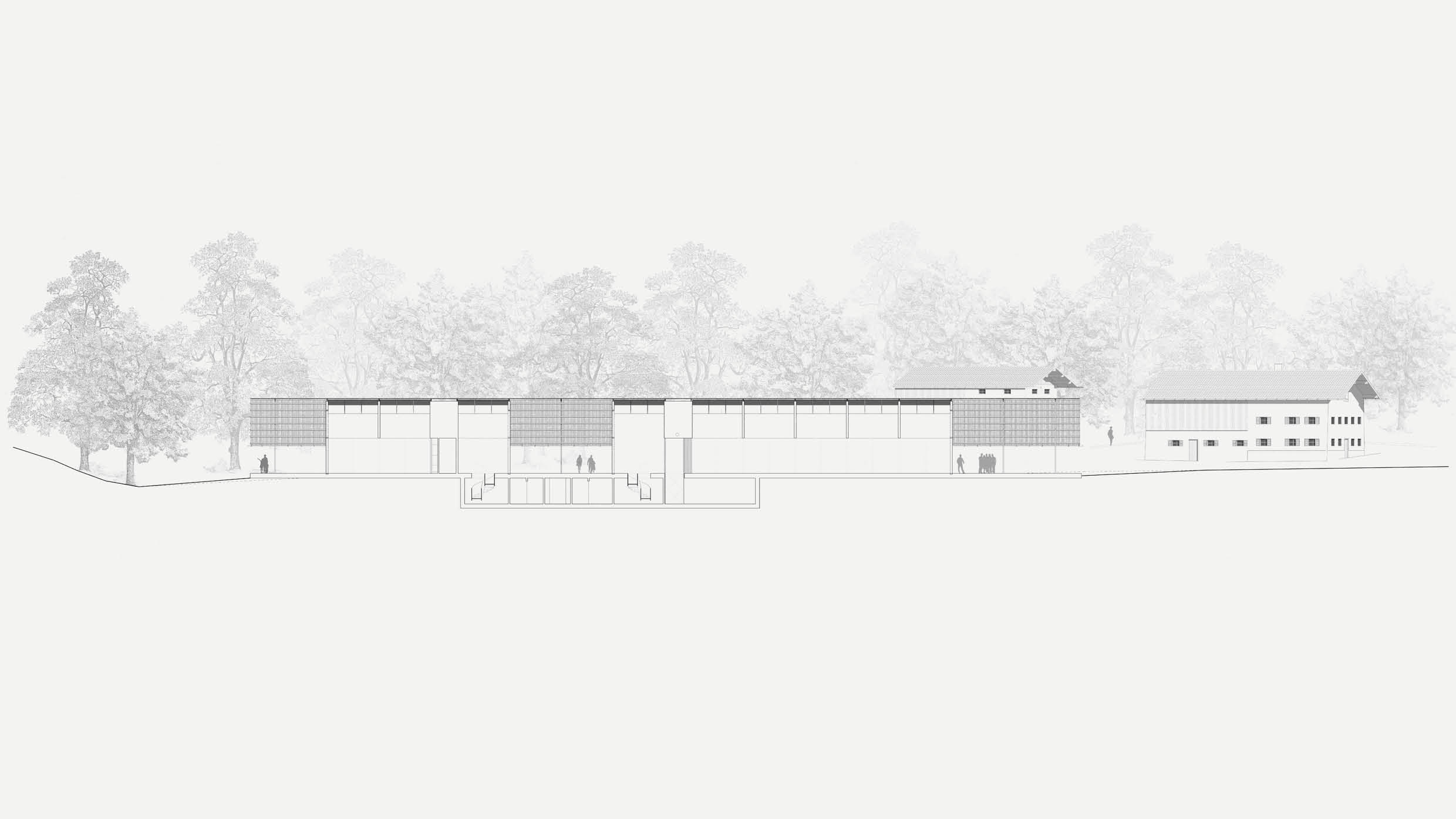
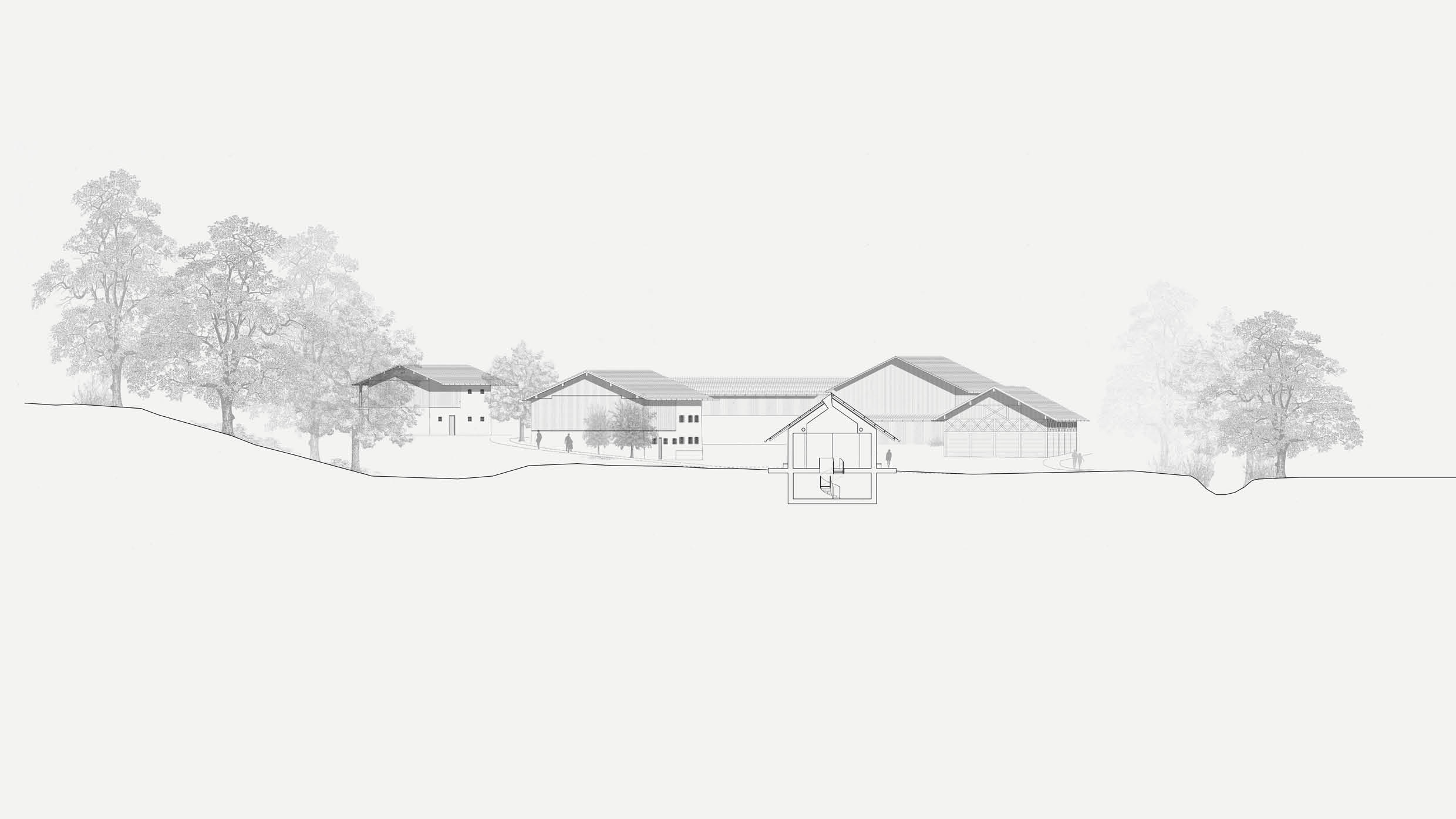
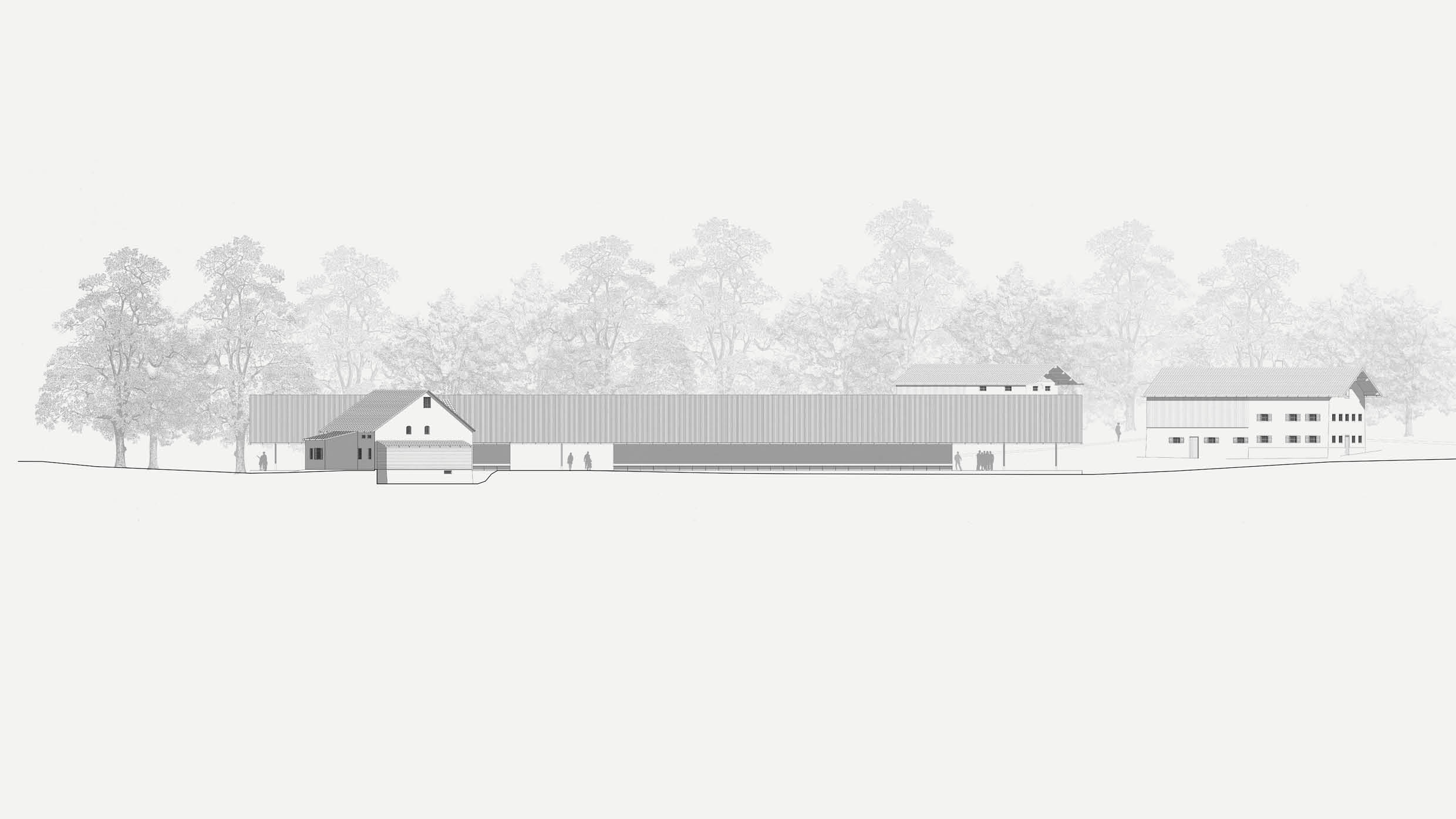
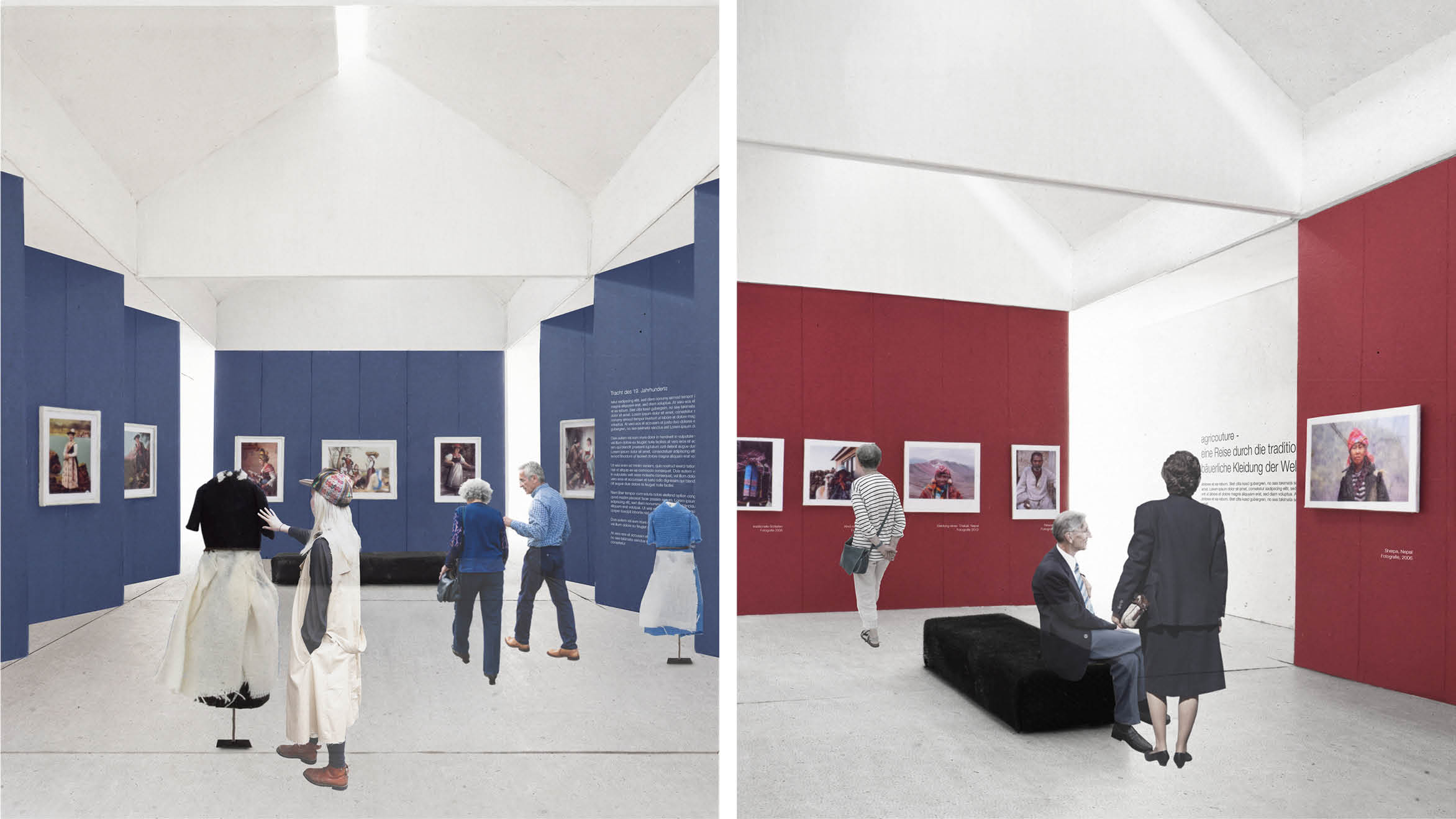
FARMHOUSE MUSEUM AMERANG
The Ammerang Farmhouse Museum is being extended to include an exhibition and an educational building. This will significantly strengthen the museum's educational work. In addition to the large collection of exhibits, lectures, activity programs and high-quality special exhibitions will in future sensitize visitors to history and tradition, while also addressing contemporary issues. Like the entrance building, the new rooms have a special position in the site. They are not part of the urban exhibits, but extend them as a “serving spatial structure”.
Respecting the exhibits | Based on this approach, the spatial volumes are not separated. Instead, the exhibition and mediation areas are concentrated under a common roof, set back from the actual exhibit buildings and deliberately retaining their open spaces. The existing visual and spatial relationships between the exhibits are thus retained. Contrary to the brief, the Bartlhof will not be extended for the aforementioned reasons. As a result, special exhibitions, which are also intended to interpret the thematic context in a deliberately contemporary way, are not located in the exhibit itself. The new building is located in the western part of the site, where there is a significantly lower density of exhibits. Coming from the eastern part of the museum grounds, the area with the highest density of exhibits, the exhibition building is gabled and is subordinate to the exhibit buildings in terms of its scale. As it passes through the urban constriction between Wagnerhäusl and Häuslmannhof and thus “enters” the western area, the perception of the exhibition building changes dramatically from gable to eaves, accompanied by a deliberate leap in scale. From now on, the building can be perceived as a long structure floating in the meadow, clearly indicating its function as an exhibition building and its special role.
The didactic path | The location at the “end” of the site results in a clearly articulated turning point in the route through the site. As a bridge over the path, analogous to the bridge of the entrance building over the stream, a structurally precisely formulated overall logic (starting point - entrance building; turning point - exhibition and mediation building; end point - entrance building) of the special structures that lead through the area is created. A didactic circuit (experience, learn, reflect, verify) is created, in which the exhibit buildings and their charisma can be experienced first-hand. In the exhibition building, the perspective is broadened through the presentation of the special exhibitions. Visitors are then given a targeted look back at the exhibit buildings via the covered outdoor area of the exhibition building and can perceive thematic analogies or contrasts before being given the opportunity to verify what they have learned, thoughts or impressions on the “way back”.
The “simple” building | In line with the self-image of a “serving” building, the structure is articulated as a “simple” building whose appearance is explained not only by the urban planning component but also by the functional and indoor climate requirements. The design approach thus references traditional rural buildings, whose aesthetics, in addition to representative aspects, were often based on functional considerations. Large canopies and covered areas are characteristic and serve to shade the exterior walls and openings. The room volumes under the large roof are constructed from a combination of insulating concrete for the walls and roof, as well as concrete with storage capacity for the floor and ceilings, in order to ensure the greatest possible storage mass and thus, in conjunction with the canopies, a stable indoor climate in summer. A long, narrow basic form leads to increased structural efficiency and therefore economy due to the recurring, identical construction elements and smaller spans. The result is a reduced, functional appearance that deliberately contrasts with the exhibit buildings, thus again emphasizing the special role of the building and at the same time specifically seeking echoes of the material style of 21st century agricultural construction.
Maximum variability | Inside, the building is designed as a spatial system with two large rooms, which are set in relation to each other by the covered forecourt that spans the circular path. The large rooms can be optimally adapted to the usage and exhibition concepts using “room panels” that can be moved along rails to divide, subdivide and control the quality of the space. In addition to their space-creating function, these room panels also serve as large-scale acoustic elements and supports for the exhibits. The interplay between the concentration of uses on the one hand and the identical basic principle of the rooms on the other results in maximum flexibility of use. It is therefore possible to swap, combine or replace uses without any problems. For example, the education area can be temporarily added to the exhibition area if an additional room is required for the vernissage of an exhibition for lectures in the supporting program. In the winter months, it is also possible to differentiate between processing the exhibits and preparing the exhibition or to use the exhibition space for educational purposes or workshops with a large number of visitors during exhibition-free periods. Where appropriate, the serving rooms are bundled together and offered in the basement, which also results in further synergy effects in terms of infrastructure. At the same time, the basement serves as a thermally protected transition, but can also be allocated to the individual parts of the building if required.
TOPIC:
Exhibition And Outreach Building
LOCATION:
Amerang, DE
YEAR:
2020
CLIENT:
Freistaat Bayern
TYPOLOGY:
Institutional | Architecture
STATUS:
Competition, Special Price
TEAM:
Michael Becker, Roland Schafroth
PLANNING TEAM:
Merz Kley Partner GmbH,
Müller BBM GmbH,
IB Hirdina, Kempten
VISUALISATION:
Becker Architects Planners
WORKS
No.155 | 2023.
School for Timber and Design Garmisch-Partenkirchen

No.132 | 2016
Development Plan Mindelheim Tractor Museum
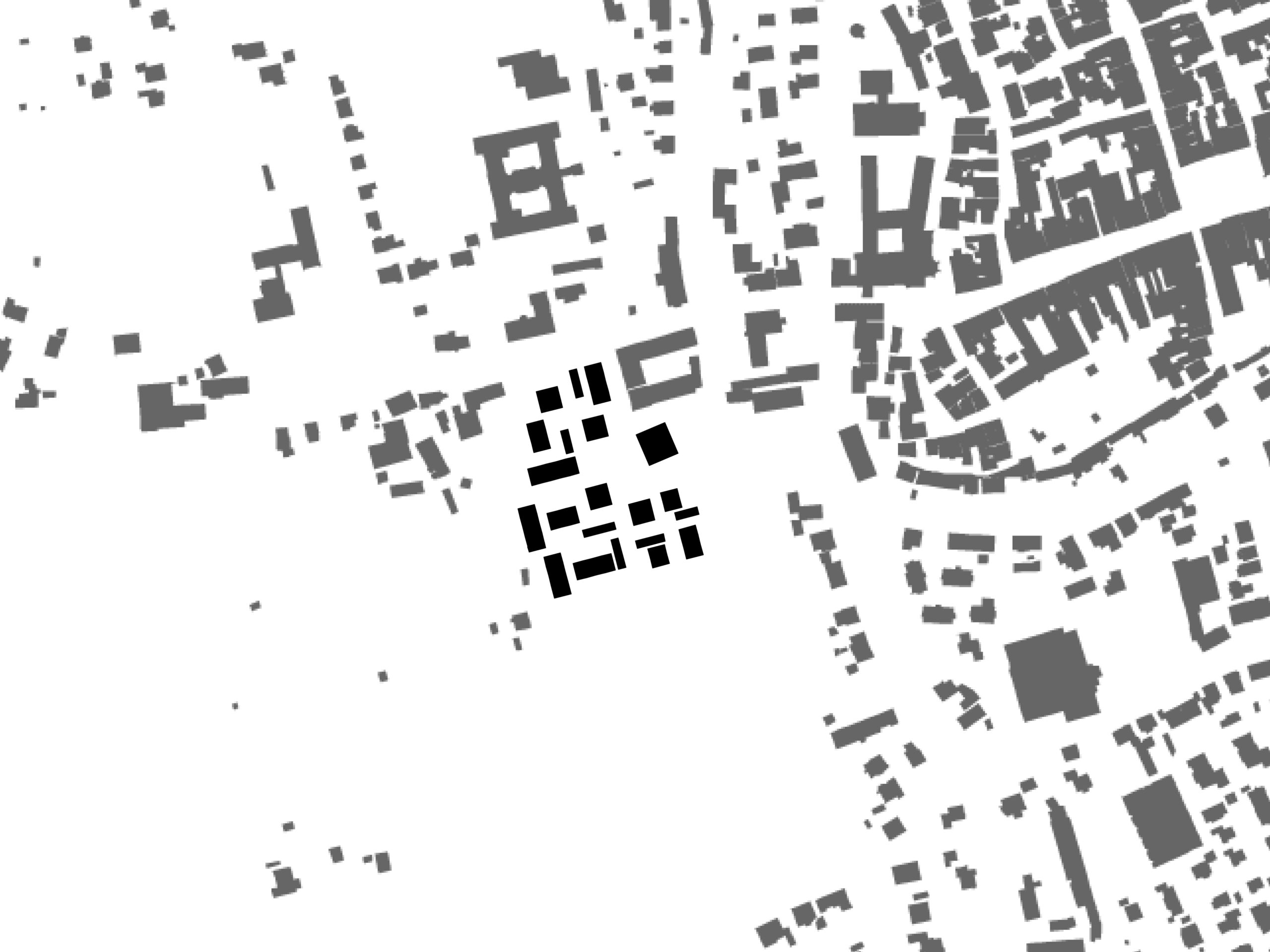
No.119 | 2014
Development Plan of Hospital Kempten

No.111 | 2013.
Transformation Of The Haindl Paper Factory Site Waltenhofen
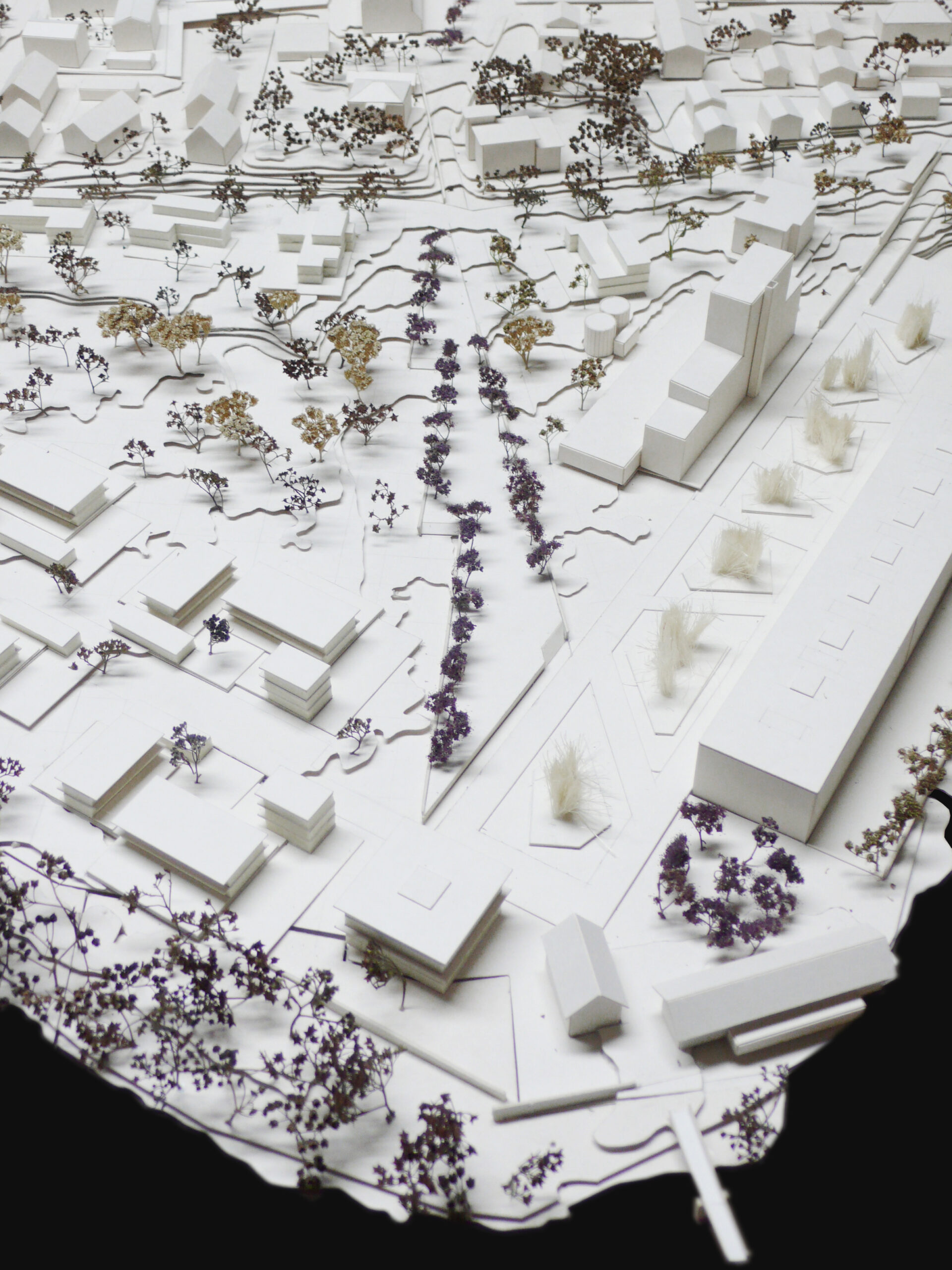
No.102 | 2012
IFEN Walmendinger Horn Cable Car Station

CONTACT
STUDIO KEMPTEN
Keselstraße 14
87435 Kempten. Allgäu
P.: +49.831.745 8998.0
F.: +49.831.745 8998.9
General: kontakt@becker-architekten.net
Career | Press: info@beckerarchitects.eu
SOCIAL MEDIA
LEGAL
BECKER ARCHITECTS PLANNERS BDA ©2024

